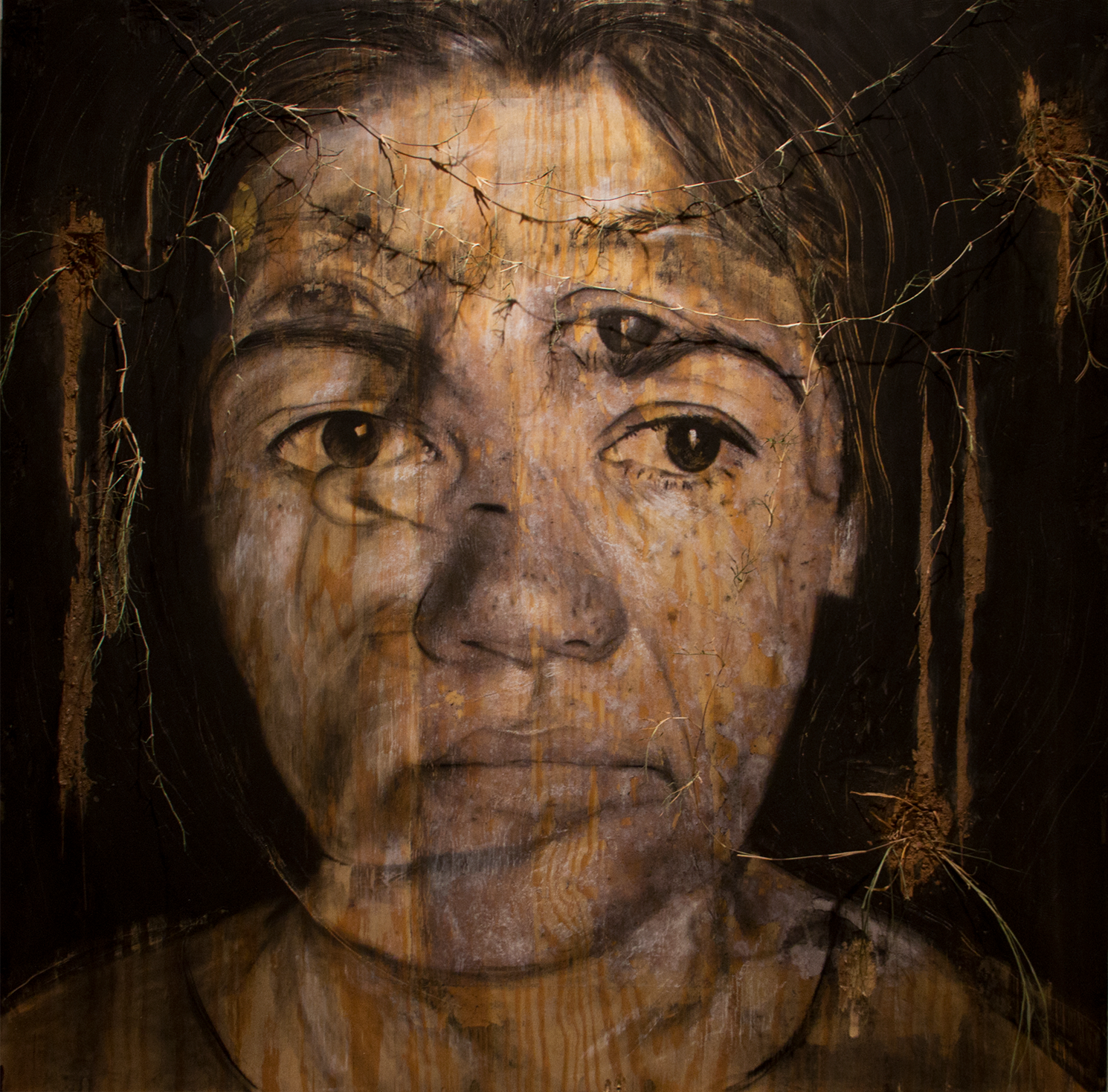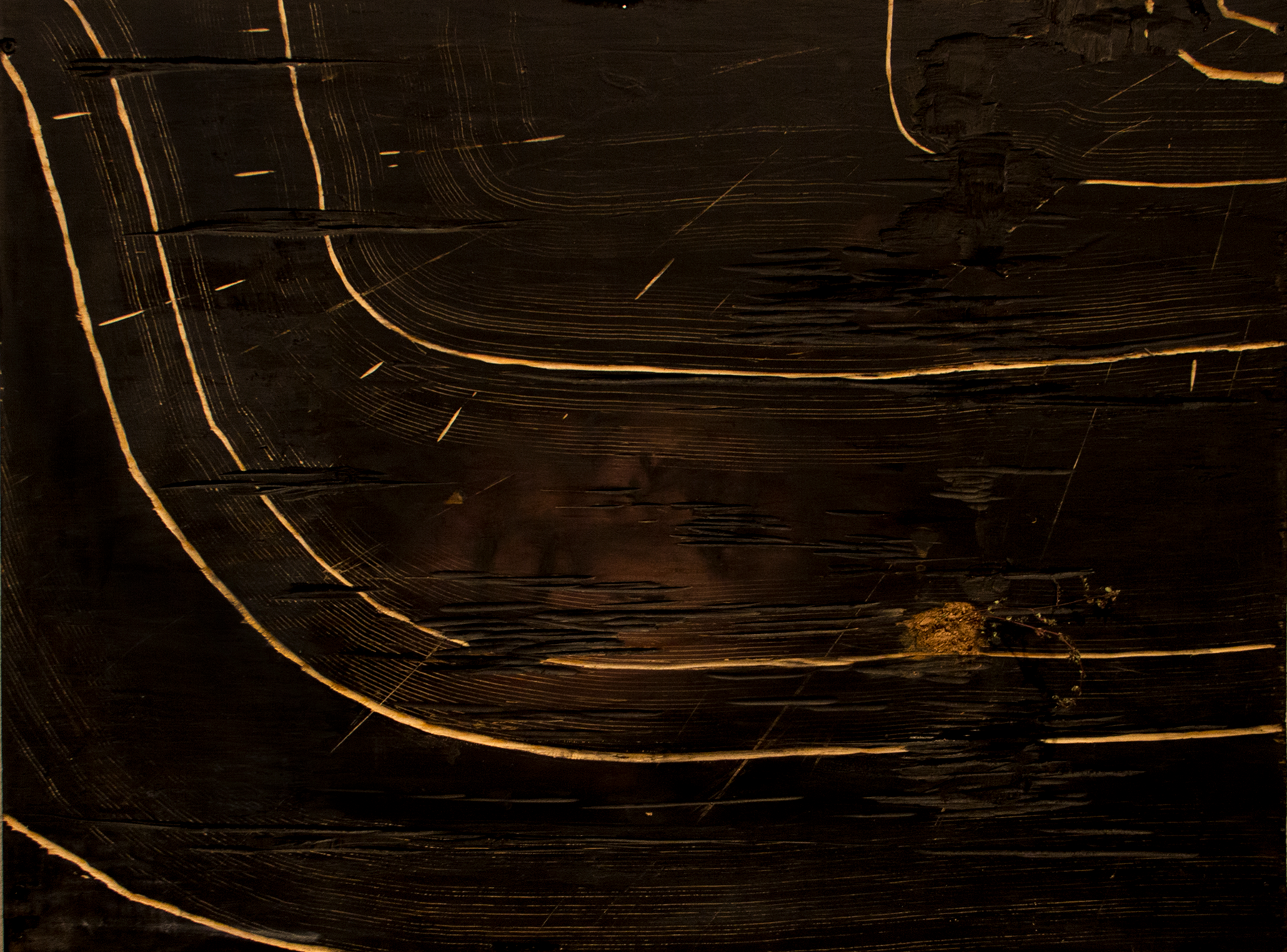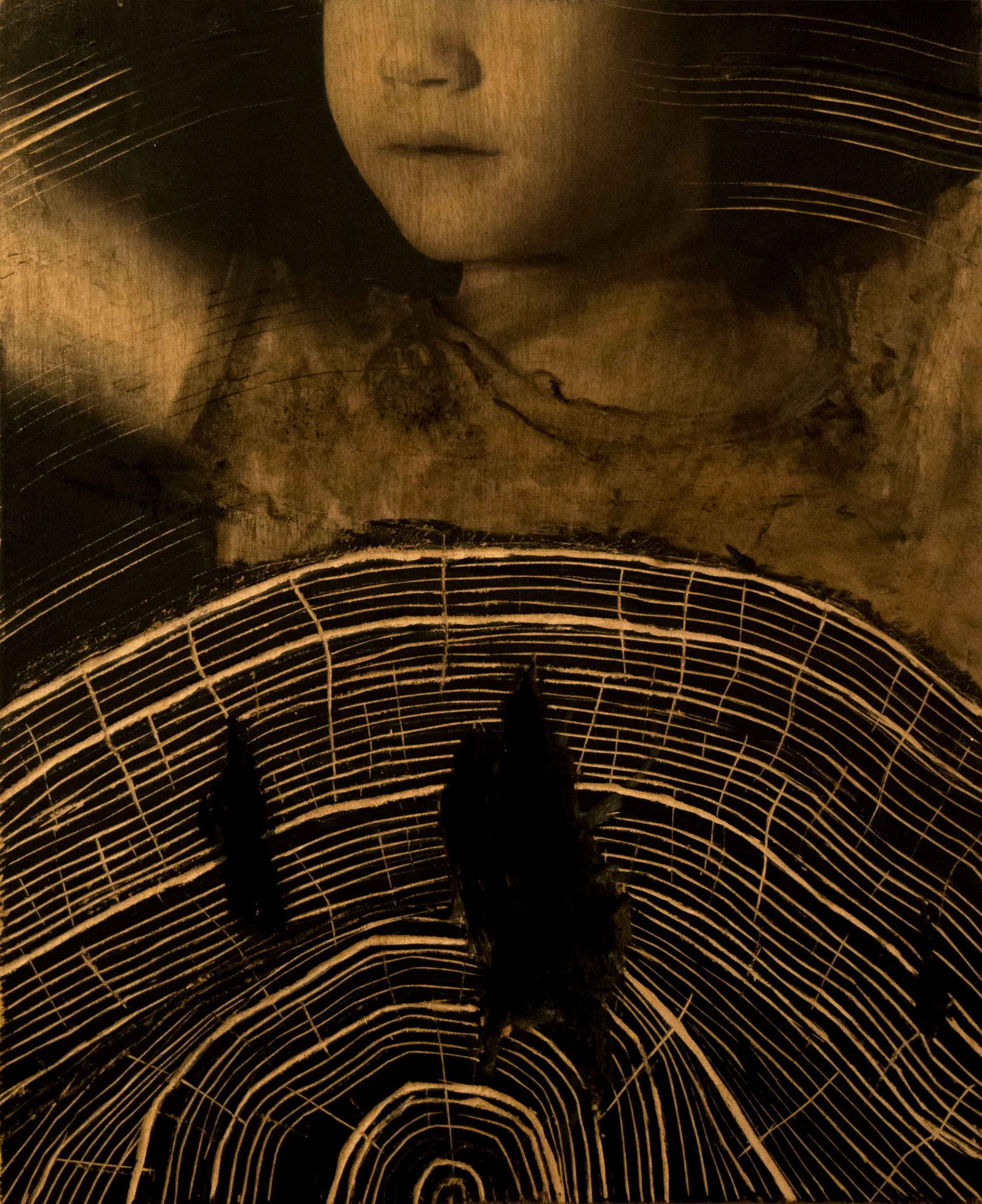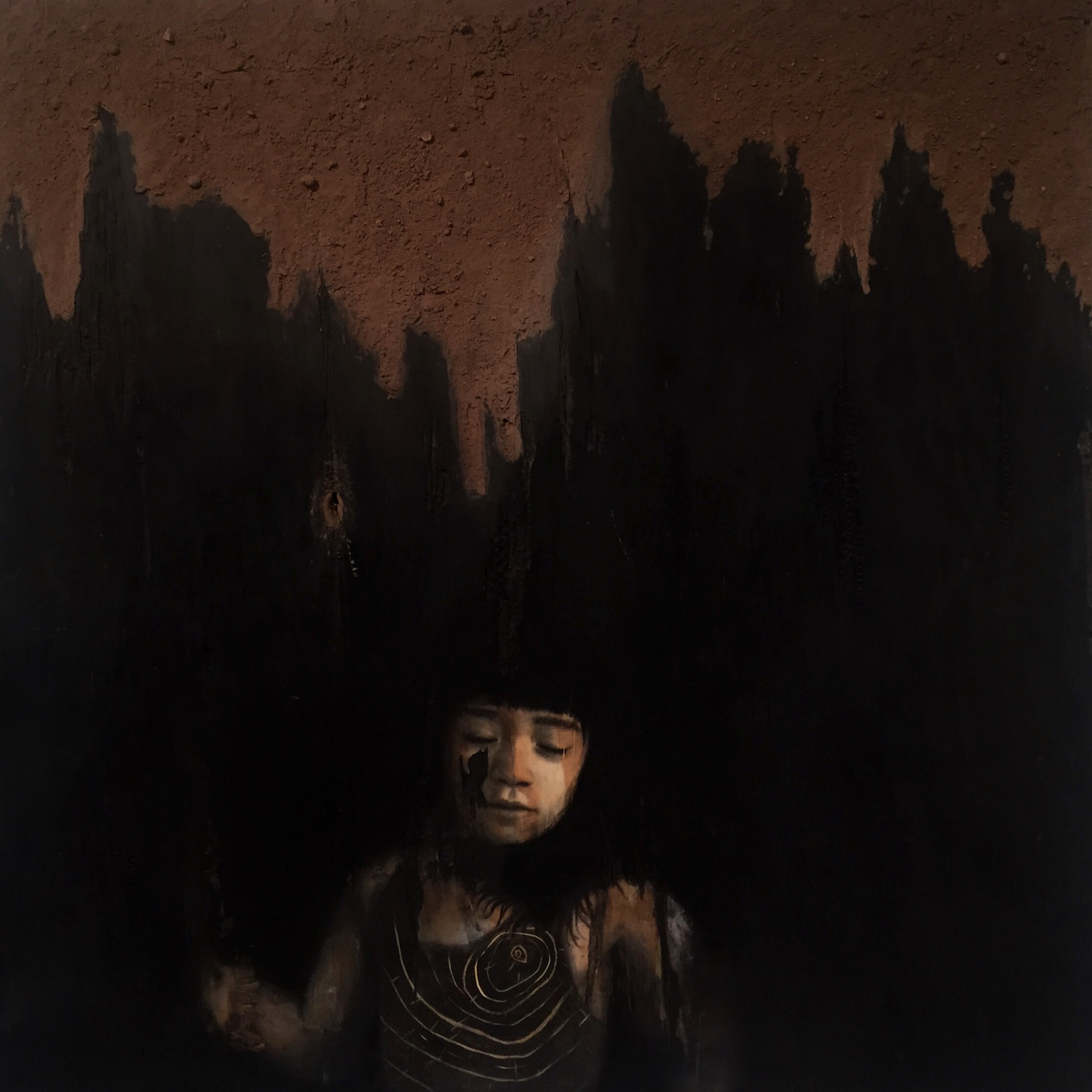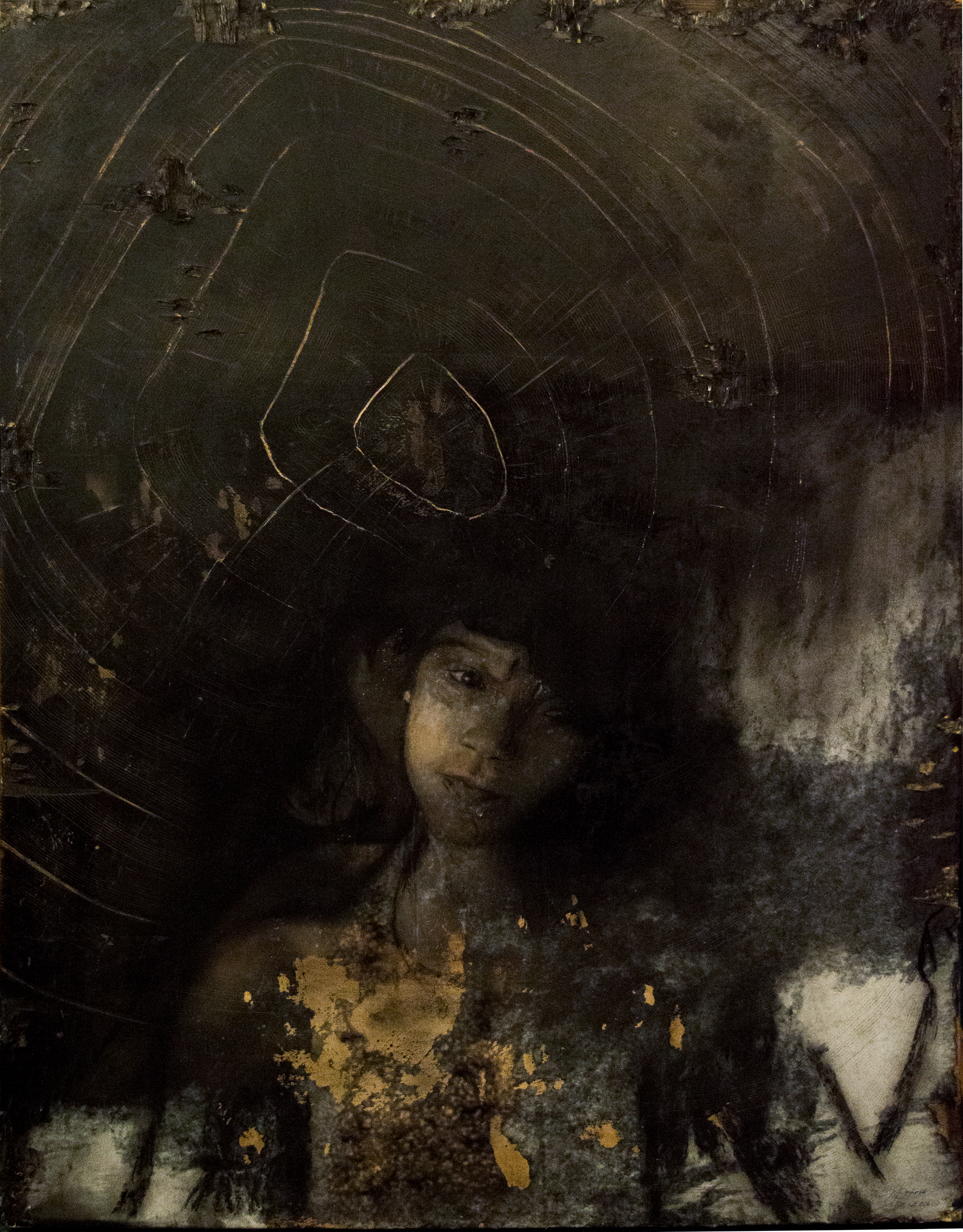“Mano De Dios”
Impresión de mano de yeso, bloque de adobe, envoltura de plástico y soga,
Dimensiones variables
En el arte, la representación de la mano de Dios es una forma usada por las religiones monoteístas, e inicialmente por el judaísmo, para mostrar la intervención divina en un determinado contexto.
En ámbito cristiano la mano derecha de Dios tiene diversas significaciones: indica protección divina, también legitimación de un poder o bien un testimonio cualquiera. Frecuentemente en el cielo entre las nubes y dirigida hacia la tierra; con los dedos abiertos o juntos, o bien bendiciendo.
En la instalación la mano connota una bendición hacia la tierra y comunidad la cual a sido repercutida por violencia y muerte debido al narcotrafico. Los bloques de adobe fueron adquiridos de la sierra madre de Chihuahua donde gran parte de mi familia aún habita y han sido directamente afectados por esta dinámica de poder. La mano representa la sociedad que recurre a la religión como una fuente de refugio
"God's hand"
Plaster hand print, adobe block, plastic wrap and rope,
Variable dimensions
In art, the representation of the hand of God is a form used by monotheistic religions, and initially by Judaism, to show divine intervention in a certain context.
In the Christian sphere, the right hand of God has different meanings: it indicates divine protection, and it also legitimizes a power or any testimony. Frequently in the sky between the clouds and directed towards the earth; with fingers open or together, or blessing.
In the installation, the hand connotes a blessing towards the land and community that has been affected by violence and death due to drug trafficking. The adobe blocks were purchased from the Sierra Madre de Chihuahua where a large part of my family still lives and has been directly affected by this power dynamic. The hand represents the society that turns to religion as a source of refuge


“Mano de obra”
Objetos encontrados
Dimensiones variables
February 7, 2022
“Rosario”
Sombrero, rosas secas, letras de metal, silla, vela, alfombra y soga
Dimensiones variables
2020
Quizás la pieza más conmovedora de la colección, “Rosario”, busca un cierre. En homenaje a su difunta madre, Lesdavag crea una lápida alternativa para la tumba de su madre que no se atrevía a ver. Un sombrero tradicional del norte de México está parcialmente sumergido en el bloque de yeso endurecido, como un intento de sofocar parte de la estética tradicional de la virilidad, pero también como un gesto gentil para inclinar el sombrero por respeto. Con su nombre y los años de su nacimiento y muerte, claramente frente al espectador, ya no son el público sino que son atraídos al monumento, aparte del proceso de duelo funerario que la artista antes no podía afrontar sola.
-Leah Clancy
Perhaps the most moving piece in the collection, “Rosario” seeks closure. In tribute to his late mother, Lesdavag creates an alternate headstone for his mother’s grave which he couldn’t bring himself to see. A traditional northern Mexican hat is partially immersed in the hardened gesso block, both as an attempt to stifle some of the traditional aesthetics of manliness, but also as a gentlemanly gesture to tip one’s hat out of respect. With her name and years of her birth and death, starkly in front of the viewer, they are no longer the audience but drawn into the memorial, apart of the very funereal mourning process that the artist previously could not confront alone.
-Leah Clancy
-Leah Clancy
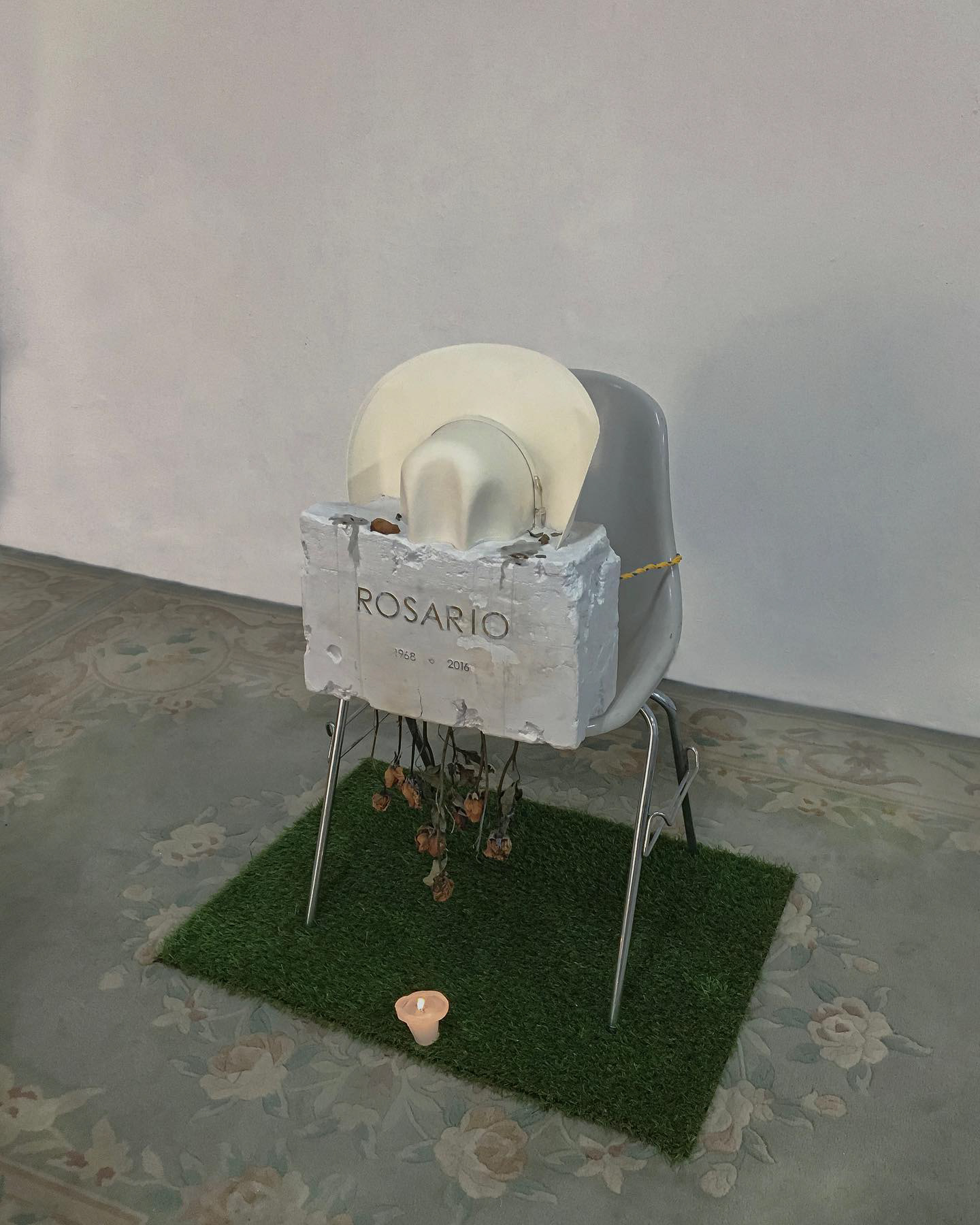

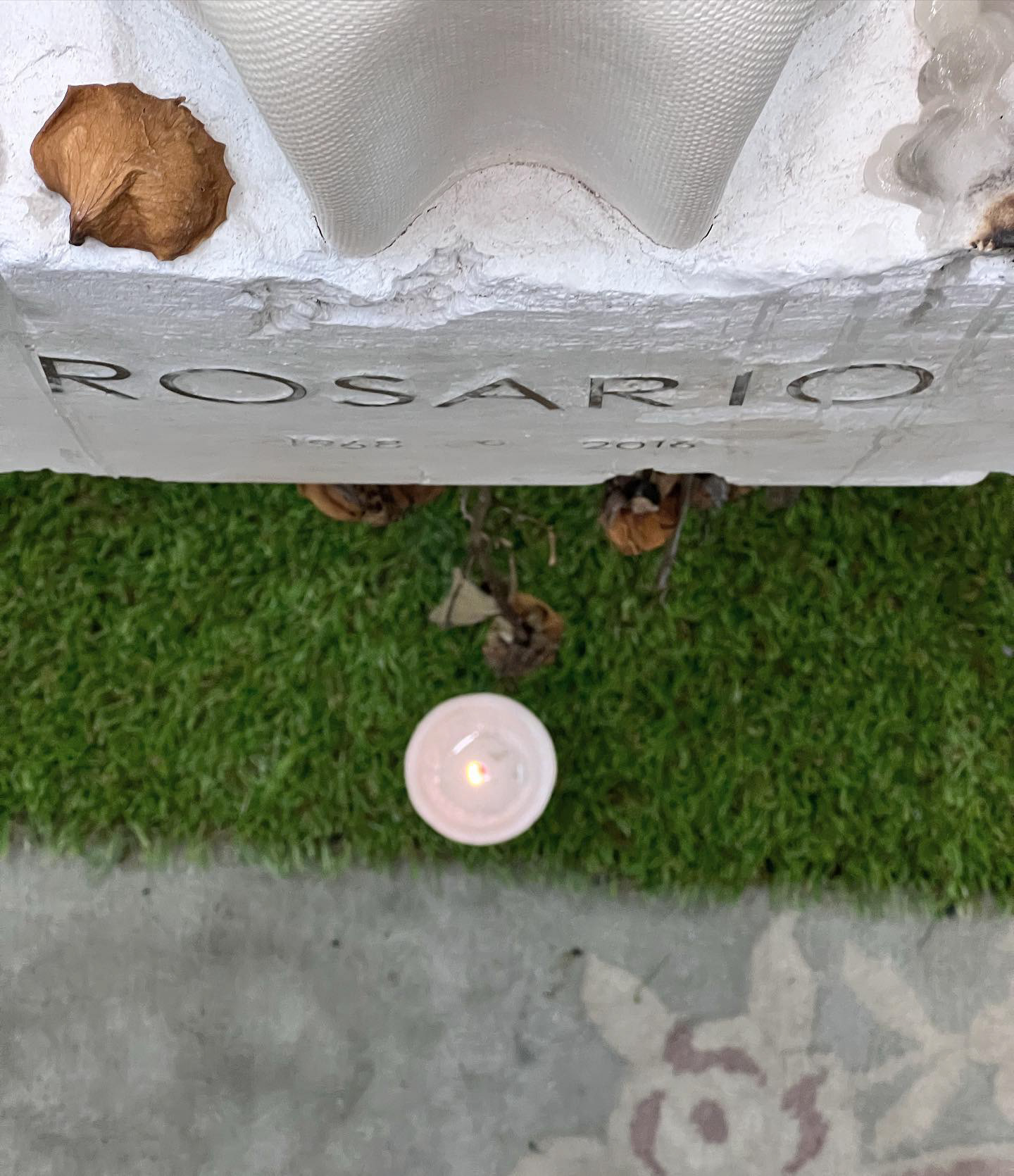

No sea lloron
Pastel de oleo sobre madera y geso
20cm x 30cm
October, 2021


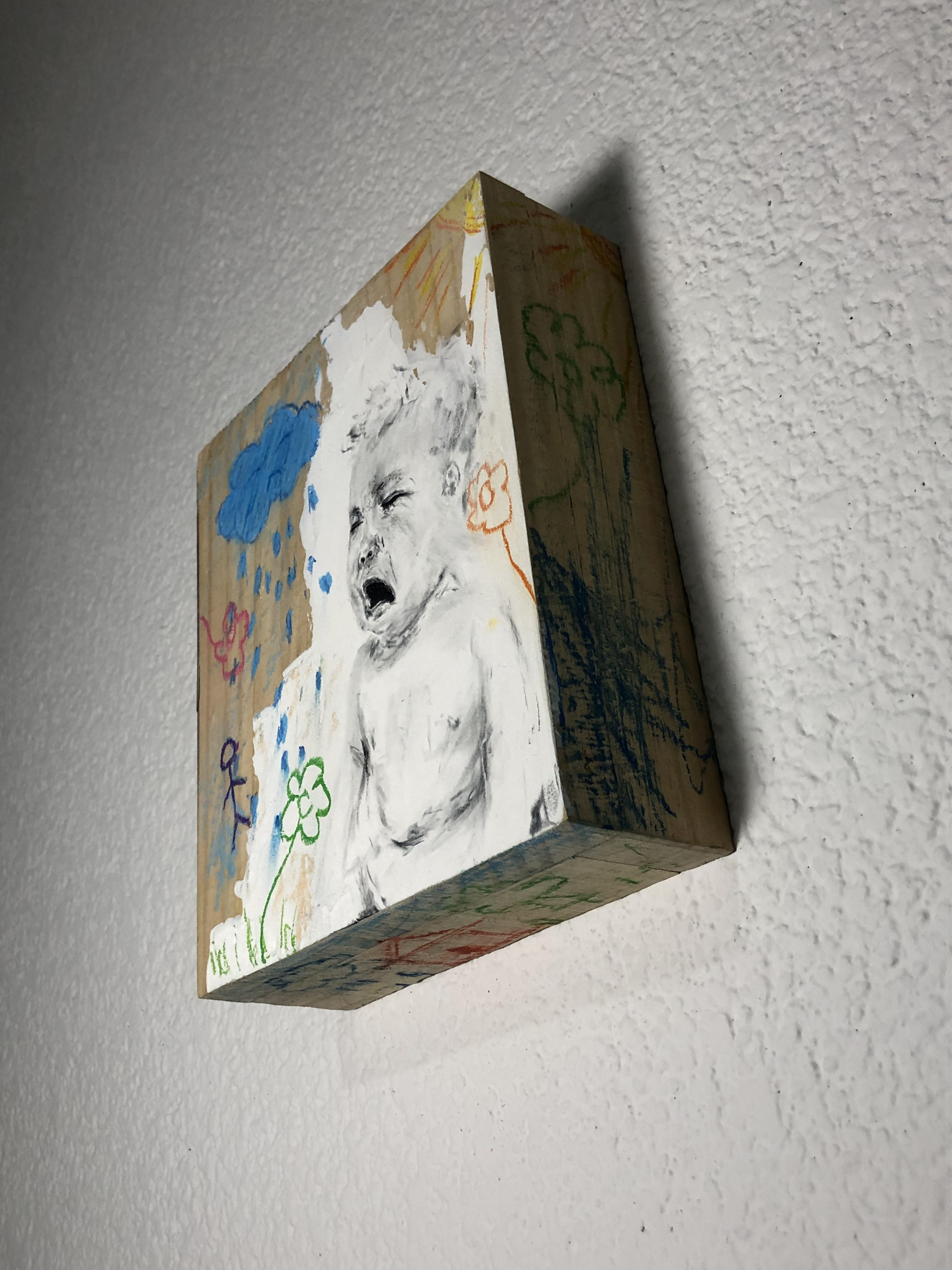
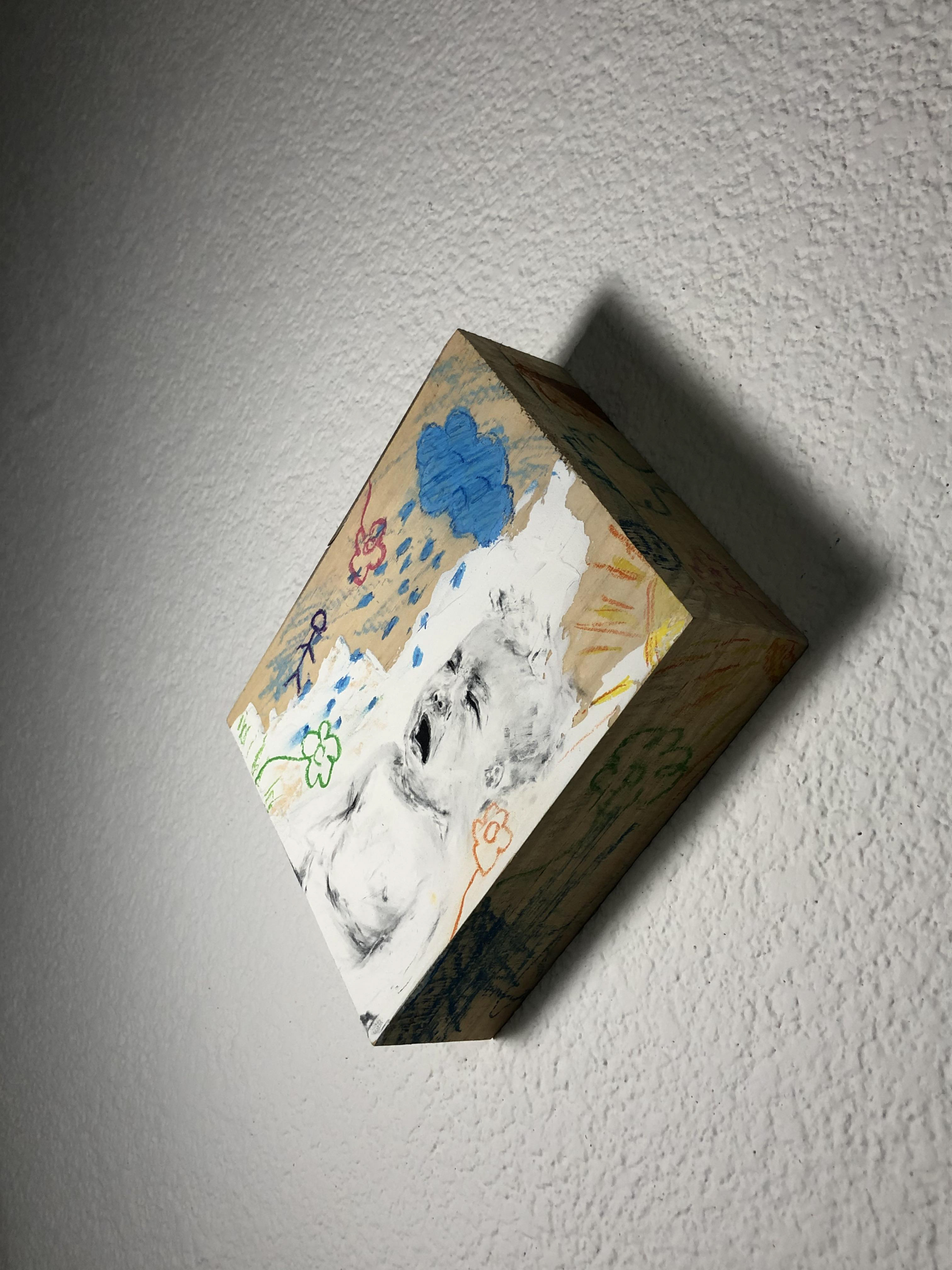
El Macho Menos
September 8, 2020
Casa Lu, Mexico City
El Macho Menos
El Macho Menos tells the story of Lesdavag’s past as a first-generation Mexican-American growing up in a family heavily shaped by machismo culture.
Rooted in patriarchal gender roles, conservative religious influence, conflicting familial values, and the impact of emotional and physical violence, this exhibition navigates the nuances of identity, struggle, and autonomy. Each of Lesdavag’s pieces serves as a memorial; they solemnly honor his experience of being raised by a domineering father, bound to machismo culture, and a strong and patient mother, both a heroine and a victim. His work combines intimate detail with widely recognized symbols of Mexican culture, wrestling with the concept of identity across an ambitious spectrum that ranges from the individual to the collective.
Many of the works’ titles are common Mexican expressions. By borrowing threads of shared language, Lesdavag collages idioms to articulate unspeakable feelings—inadequacy, fear, gratitude, and grief. And just as their titles communicate experience through metaphor, these pieces reassemble the cultural symbols and systems to which he is attached; they illustrate the evolution of his selfhood, and their figurative nature makes them both relatable and endurable.
It is fitting that Lesdavag’s exhibition at Casa Lu closes on September __ just as the celebration of Mexican Independence also ends. In the revolutionary birth of a nation, authority is established through political, emotional, and physical violence. Rules are rigidly enforced to maintain order. Entwined in a feedback loop of dominance and submission, a machismo identity—whether collective or individual—comes with sacrifice. But sacrifice is also the route to independence. With each element of El Macho Menos, Lesdavag deftly combines found objects, sculpture, drawing, performance, and video to investigate the causes and symptoms of toxic masculinity. No one's work is tethered to an individual thematic element or life event, and the range of materiality— from pliable straw and human hair to the solid yet fallible gesso—defies categorization of a singular artistic tradition or discourse. This exhibition is one that confronts an intimate reality of machismo culture and the toll it takes. It explores feeling less than adequate in performing one’s gender. It is persuading evidence that bravery is not always brazen, that concrete can be fluid, and that binaries are meant to be broken. In its entirety, Lesdavag’s El Macho Menos is simultaneously tender and forceful; accomplished and shattered; gritty and beautiful.
Exhibition Overview by Leah Clancy
The Male Less
El Macho Menos tells the story of Lesdavag’s past as a first-generation Mexican-American growing up in a family heavily shaped by machismo culture.
Rooted in patriarchal gender roles, conservative religious influence, conflicting familial values, and the impact of emotional and physical violence, this exhibition navigates the nuances of identity, struggle, and autonomy. Each of Lesdavag’s pieces serves as a memorial; they solemnly honor his experience of being raised by a domineering father, bound to machismo culture, and a strong and patient mother, both a heroine and a victim. His work combines intimate detail with widely recognized symbols of Mexican culture, wrestling with the concept of identity across an ambitious spectrum that ranges from the individual to the collective.
Many of the works’ titles are common Mexican expressions. By borrowing threads of shared language, Lesdavag collages idioms to articulate unspeakable feelings—inadequacy, fear, gratitude, and grief. And just as their titles communicate experience through metaphor, these pieces reassemble the cultural symbols and systems to which he is attached; they illustrate the evolution of his selfhood, and their figurative nature makes them both relatable and endurable.
It is fitting that Lesdavag’s exhibition at Casa Lu closes on September __ just as the celebration of Mexican Independence also ends. In the revolutionary birth of a nation, authority is established through political, emotional, and physical violence. Rules are rigidly enforced to maintain order. Entwined in a feedback loop of dominance and submission, a machismo identity—whether collective or individual—comes with sacrifice. But sacrifice is also the route to independence. With each element of El Macho Menos, Lesdavag deftly combines found objects, sculpture, drawing, performance, and video to investigate the causes and symptoms of toxic masculinity. No one's work is tethered to an individual thematic element or life event, and the range of materiality— from pliable straw and human hair to the solid yet fallible gesso—defies categorization of a singular artistic tradition or discourse. This exhibition is one that confronts an intimate reality of machismo culture and the toll it takes. It explores feeling less than adequate in performing one’s gender. It is persuading evidence that bravery is not always brazen, that concrete can be fluid, and that binaries are meant to be broken. In its entirety, Lesdavag’s El Macho Menos is simultaneously tender and forceful; accomplished and shattered; gritty and beautiful.
Exhibition Overview by Leah Clancy

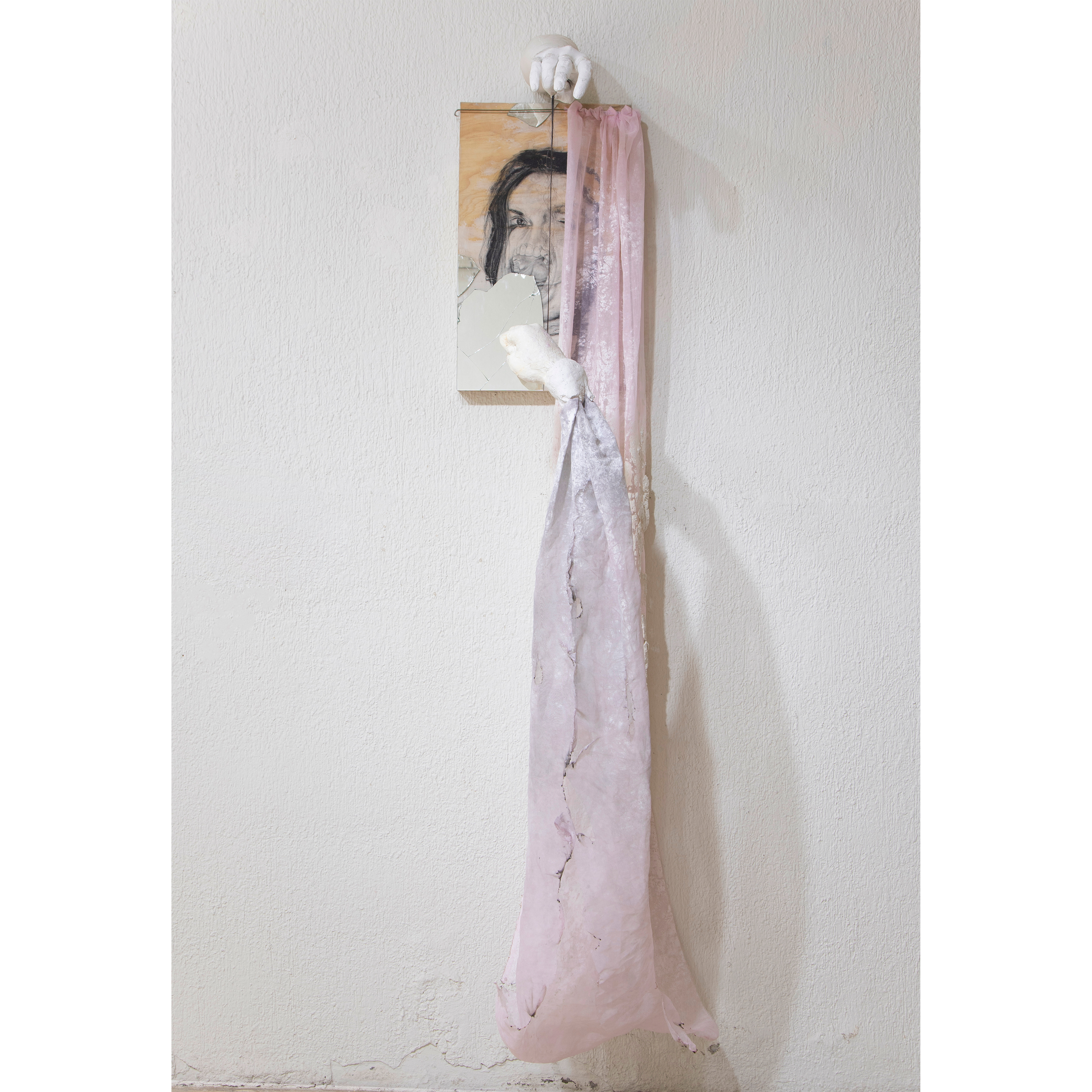
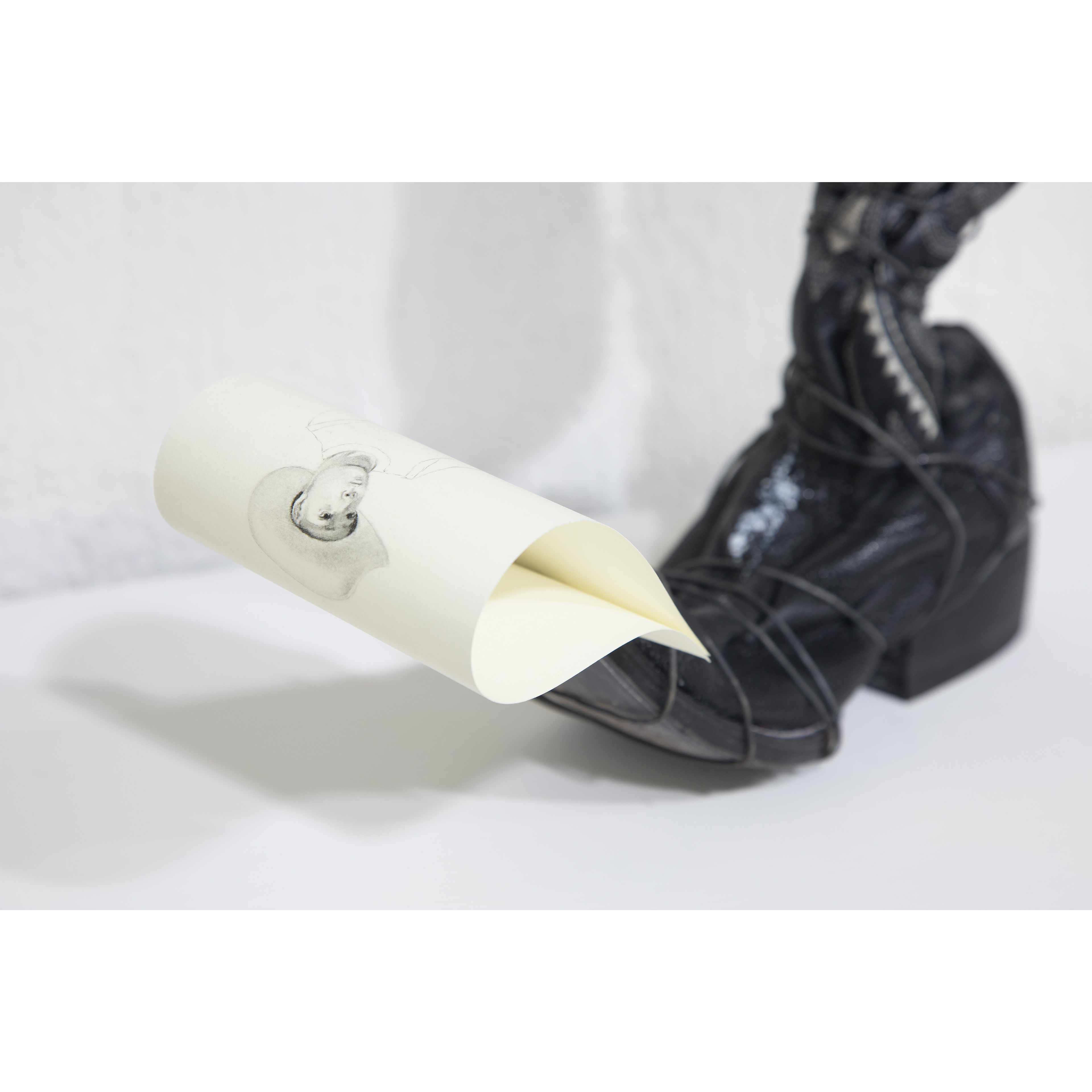


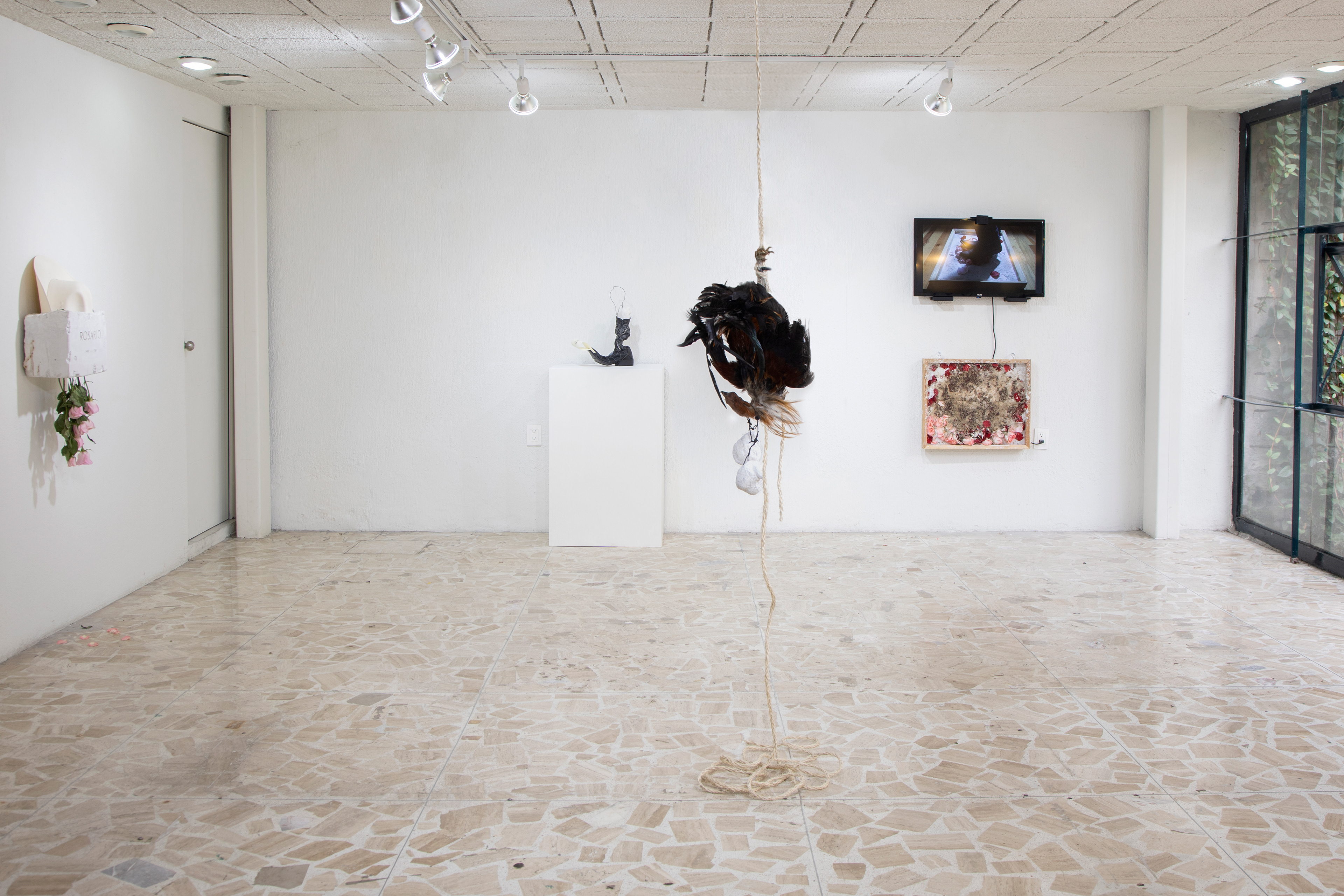
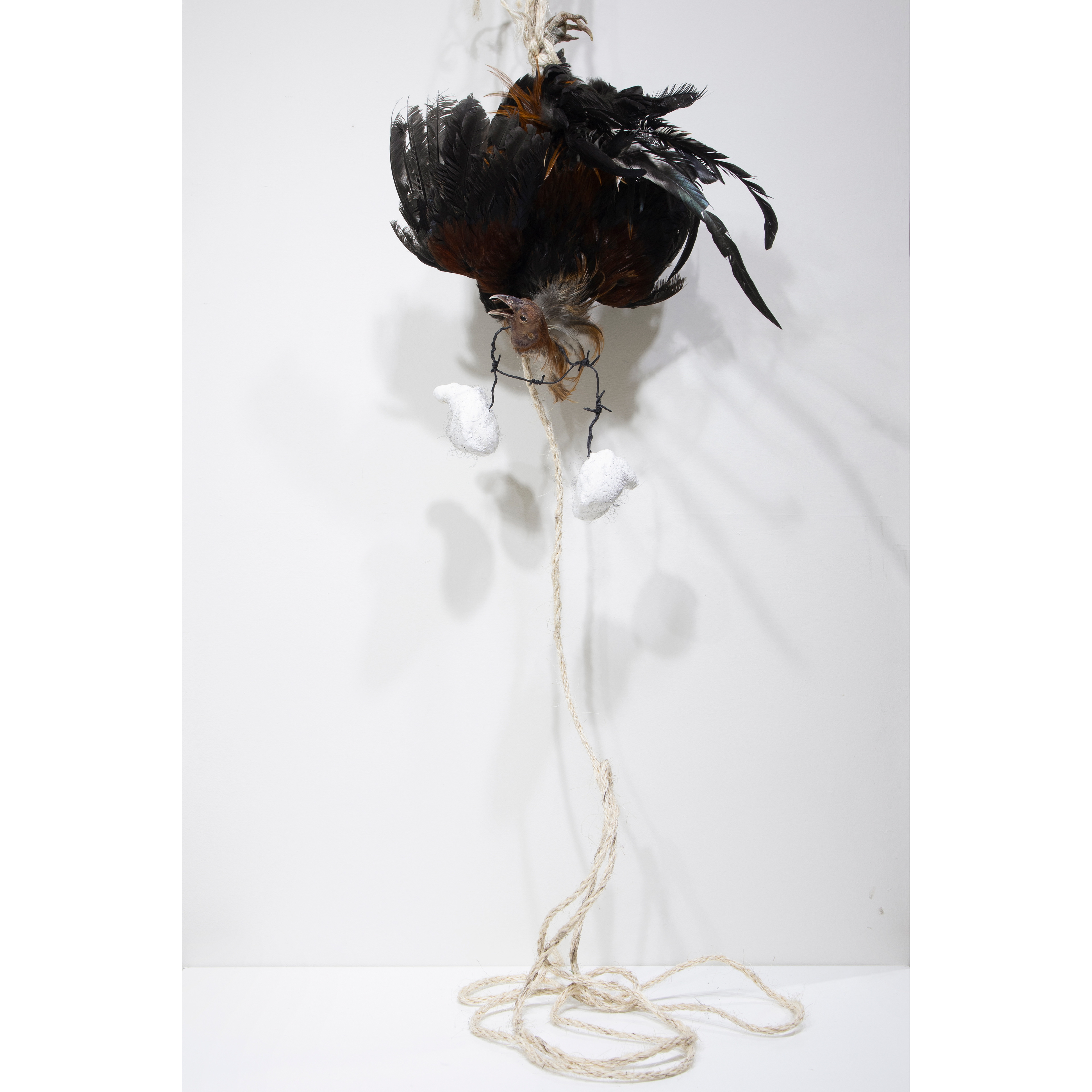
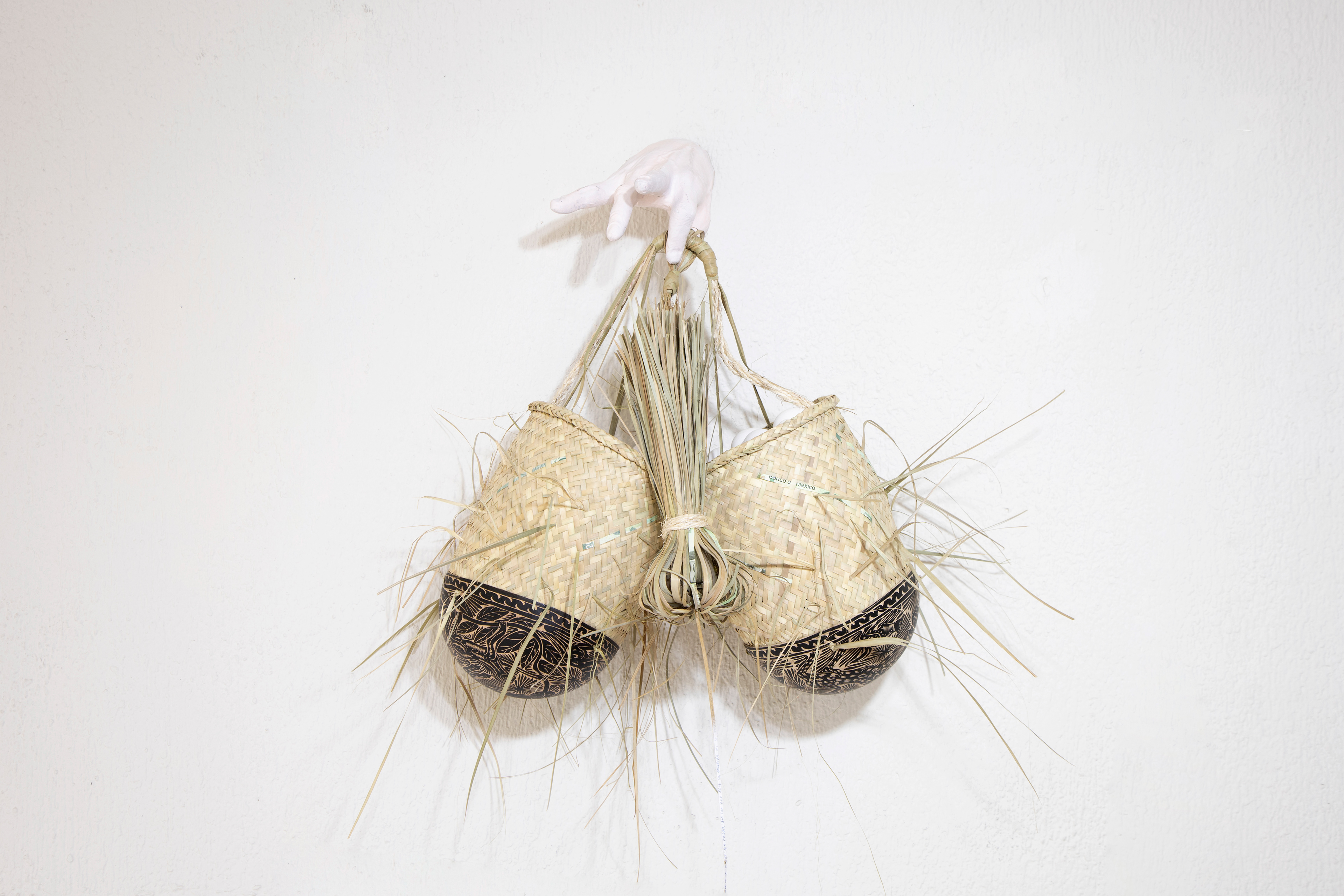



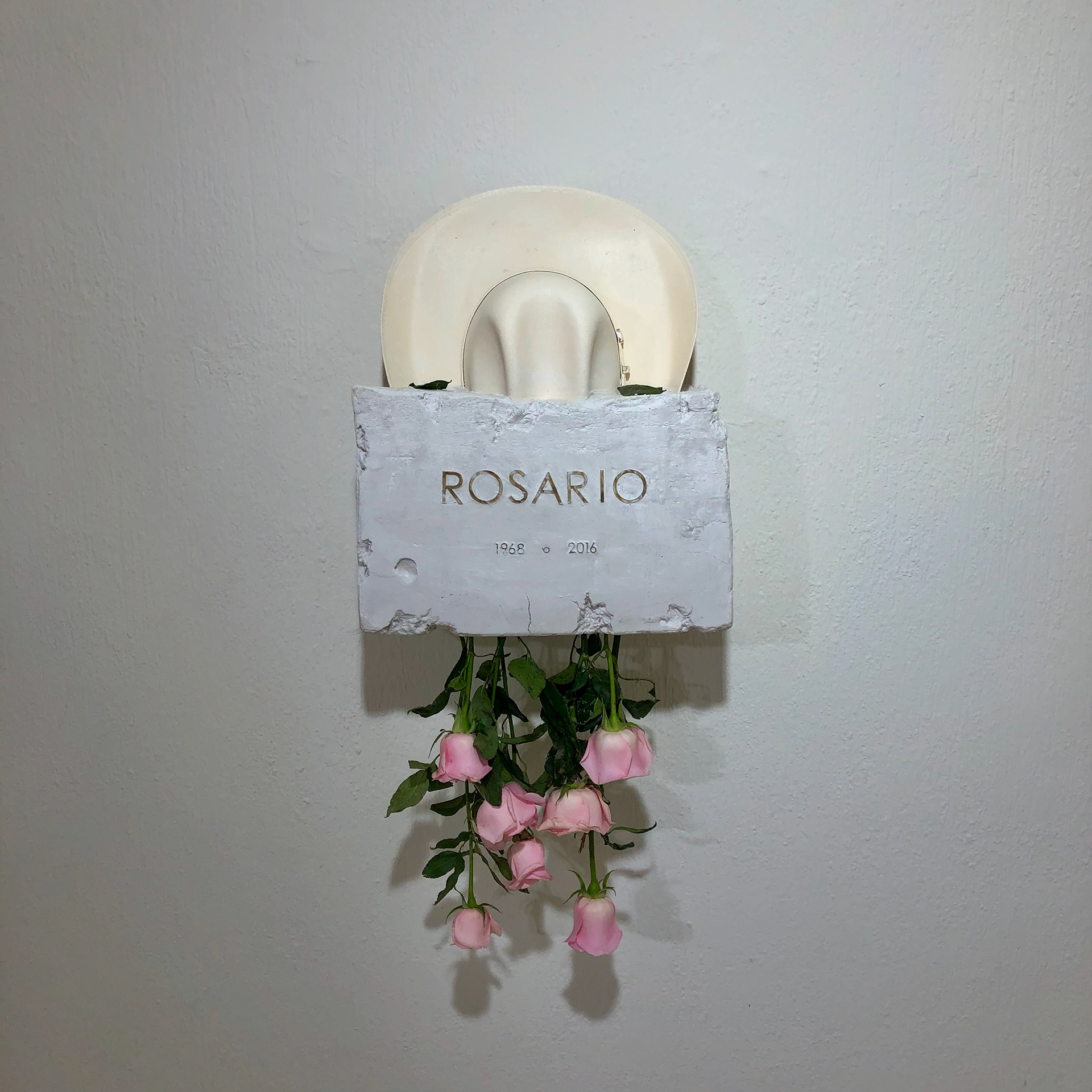
Shadows of Reminiscence (Sombras de reminiscencia)
Carved wood, ceramic sculpture, X-rays, wire, and lighting system.
November 10, 2017
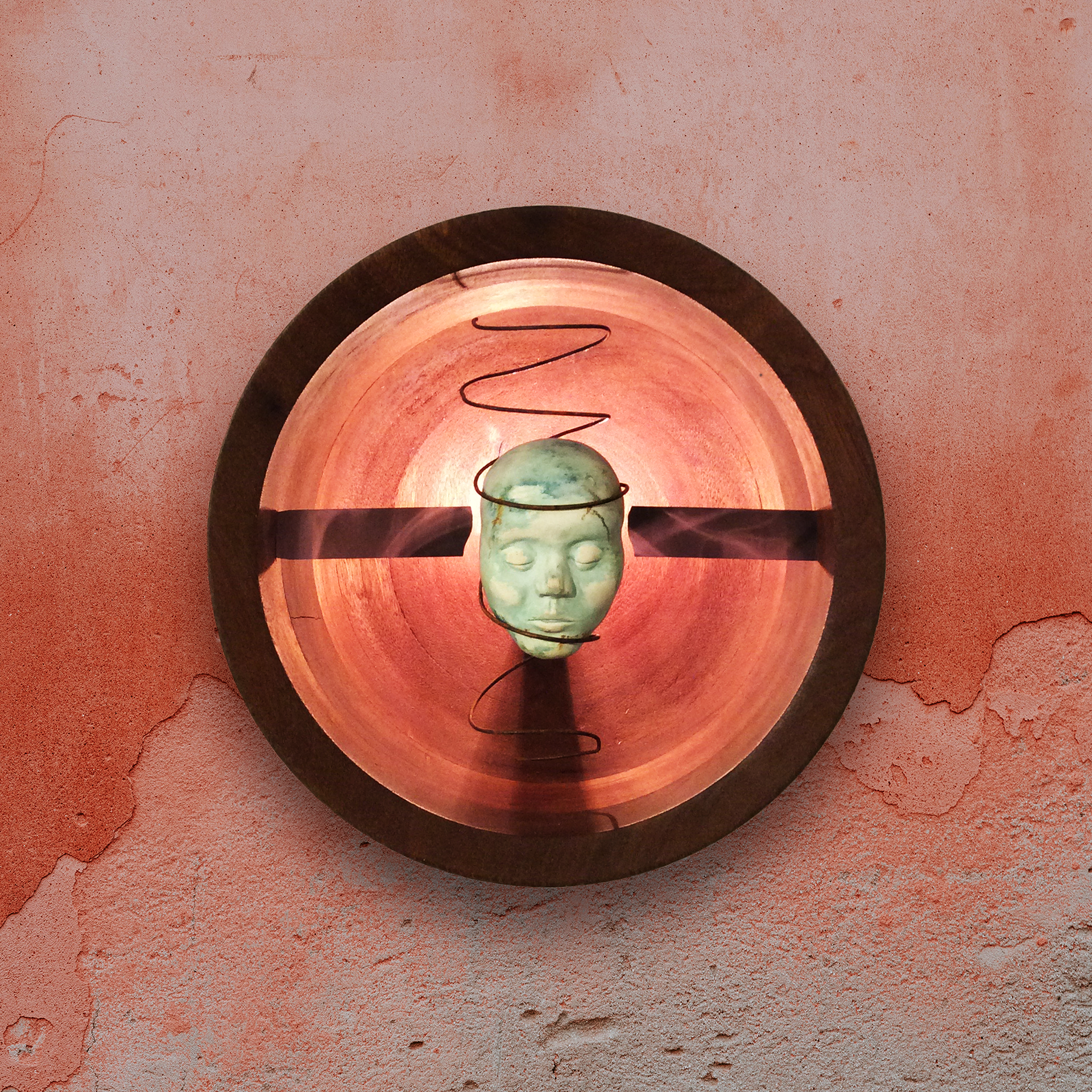
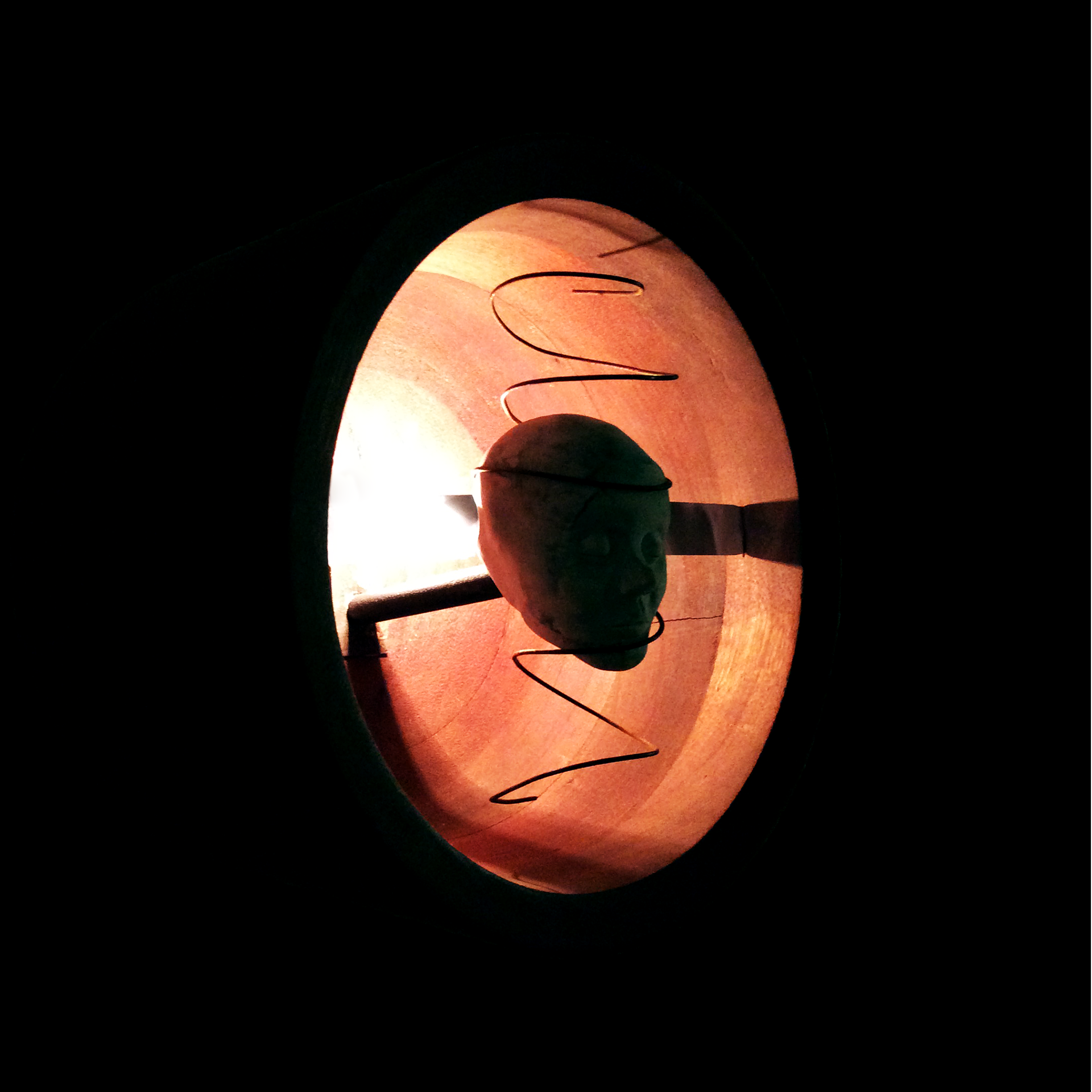

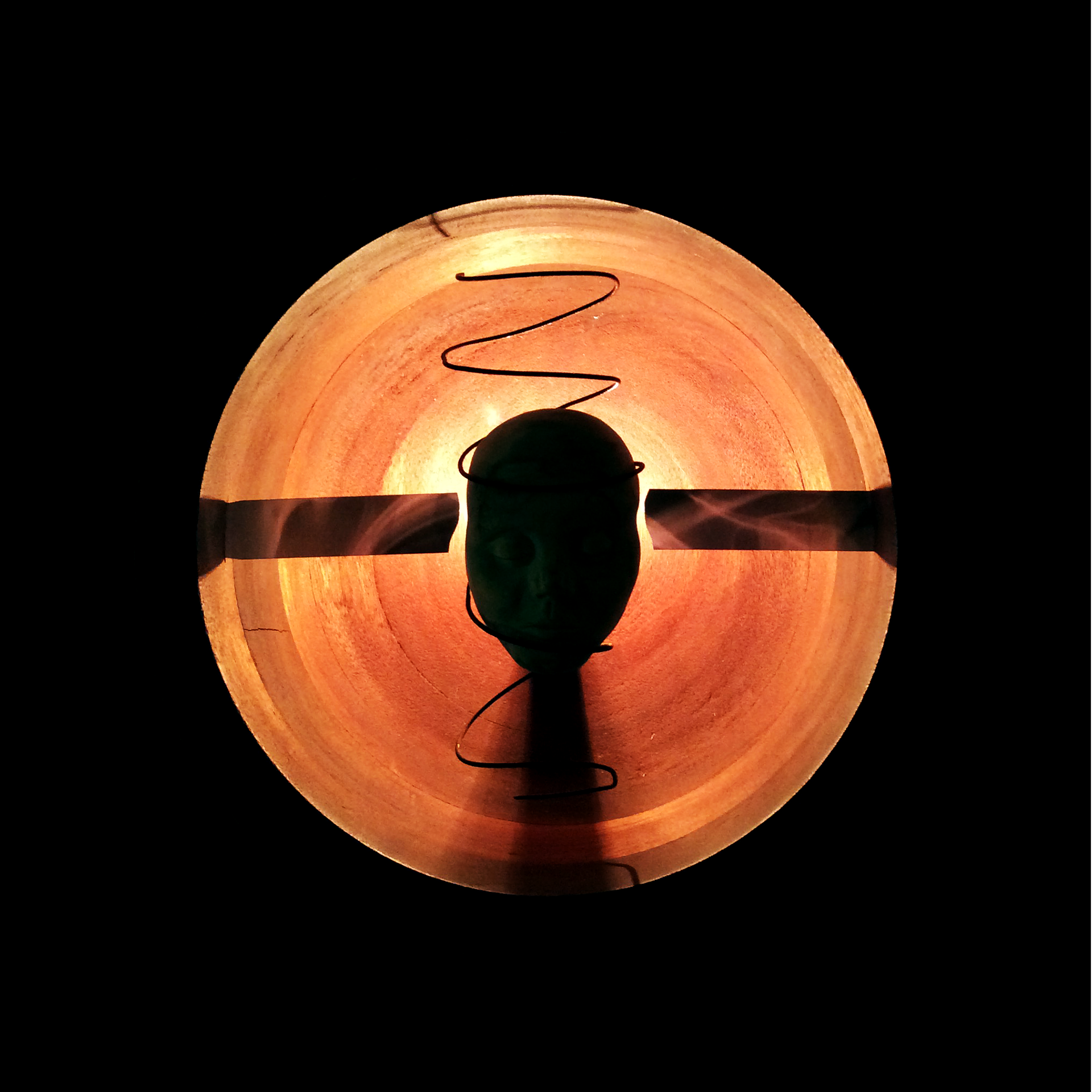
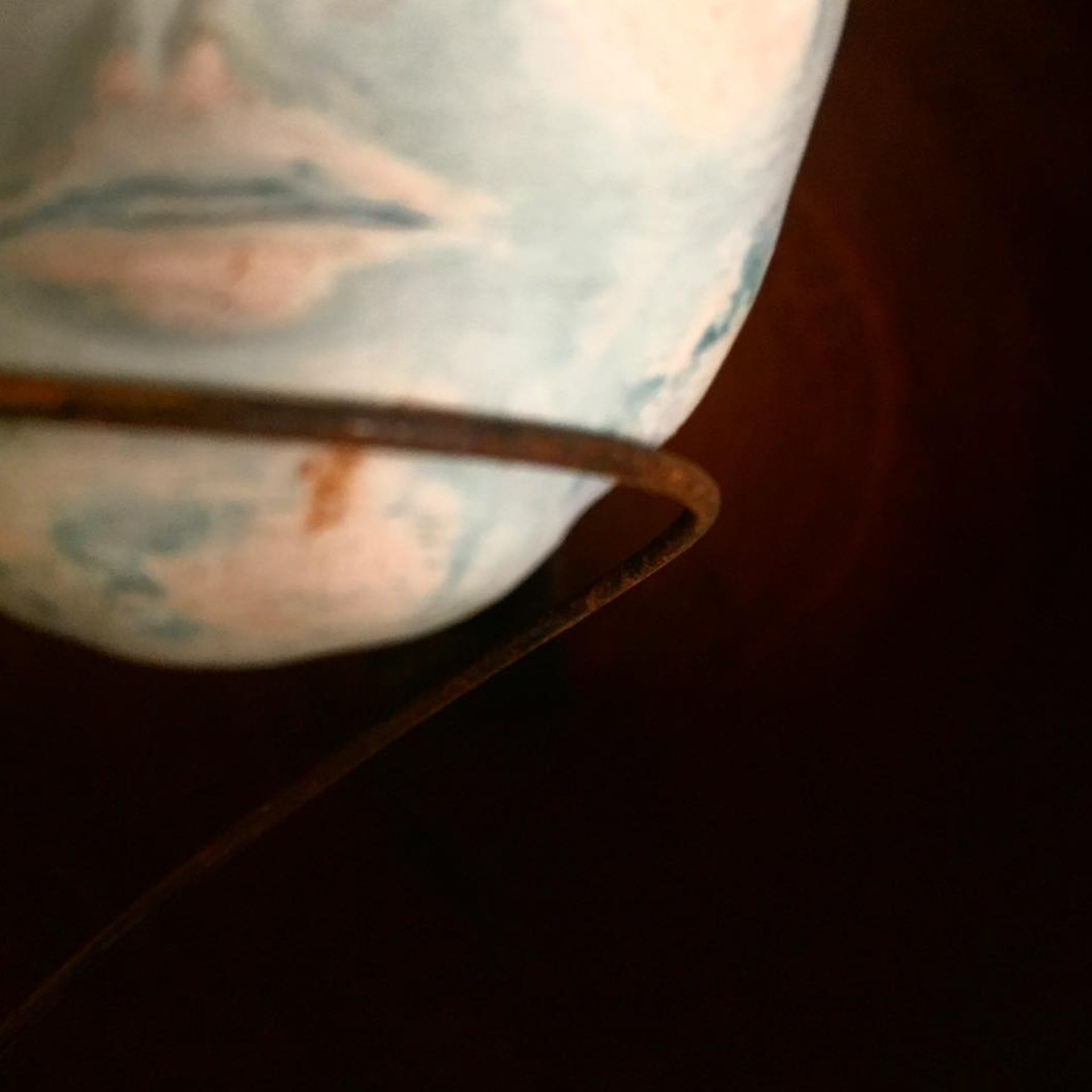

El Nudo (The Knot)
Charcoal drawing on wood panel, and dirt.
March 30, 2019
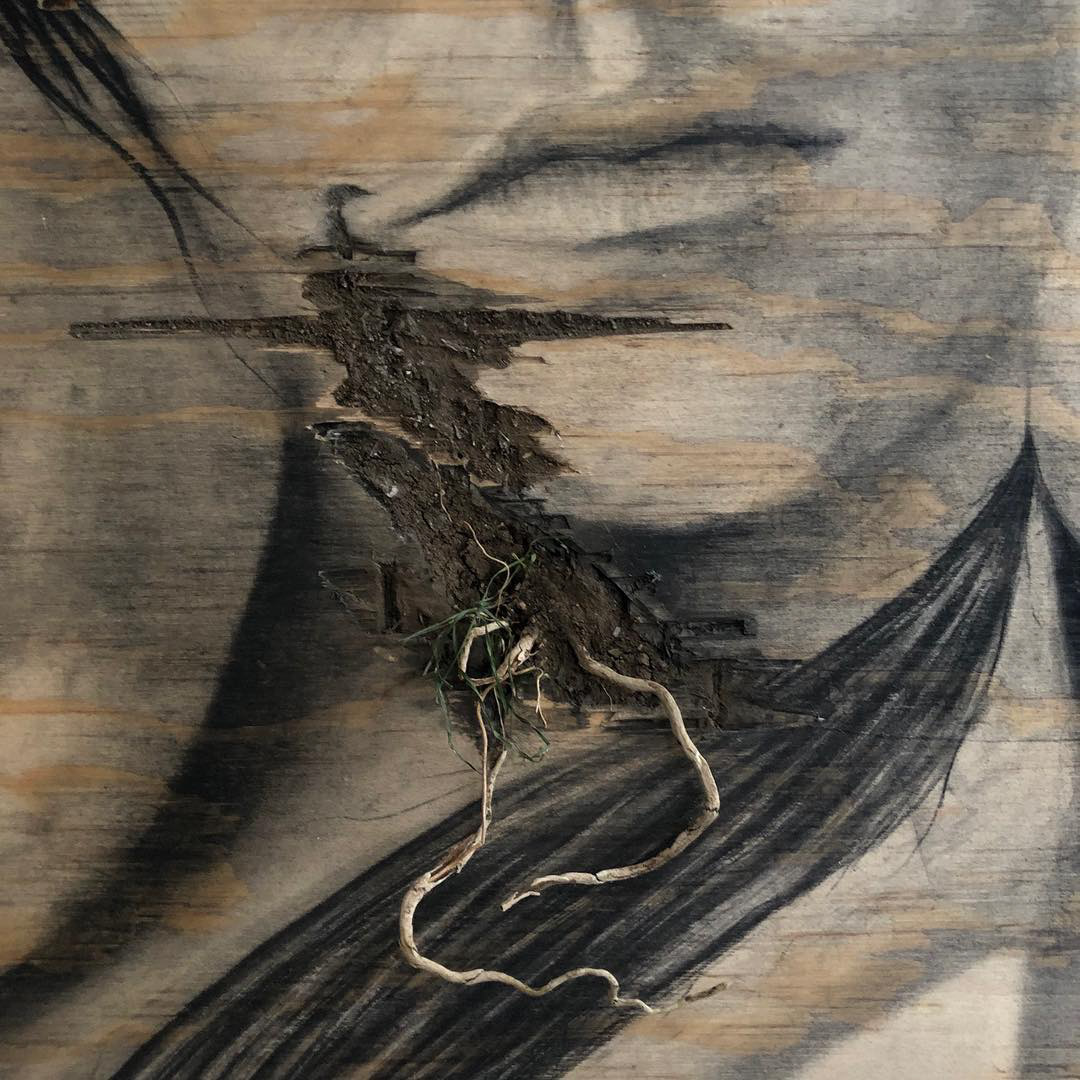

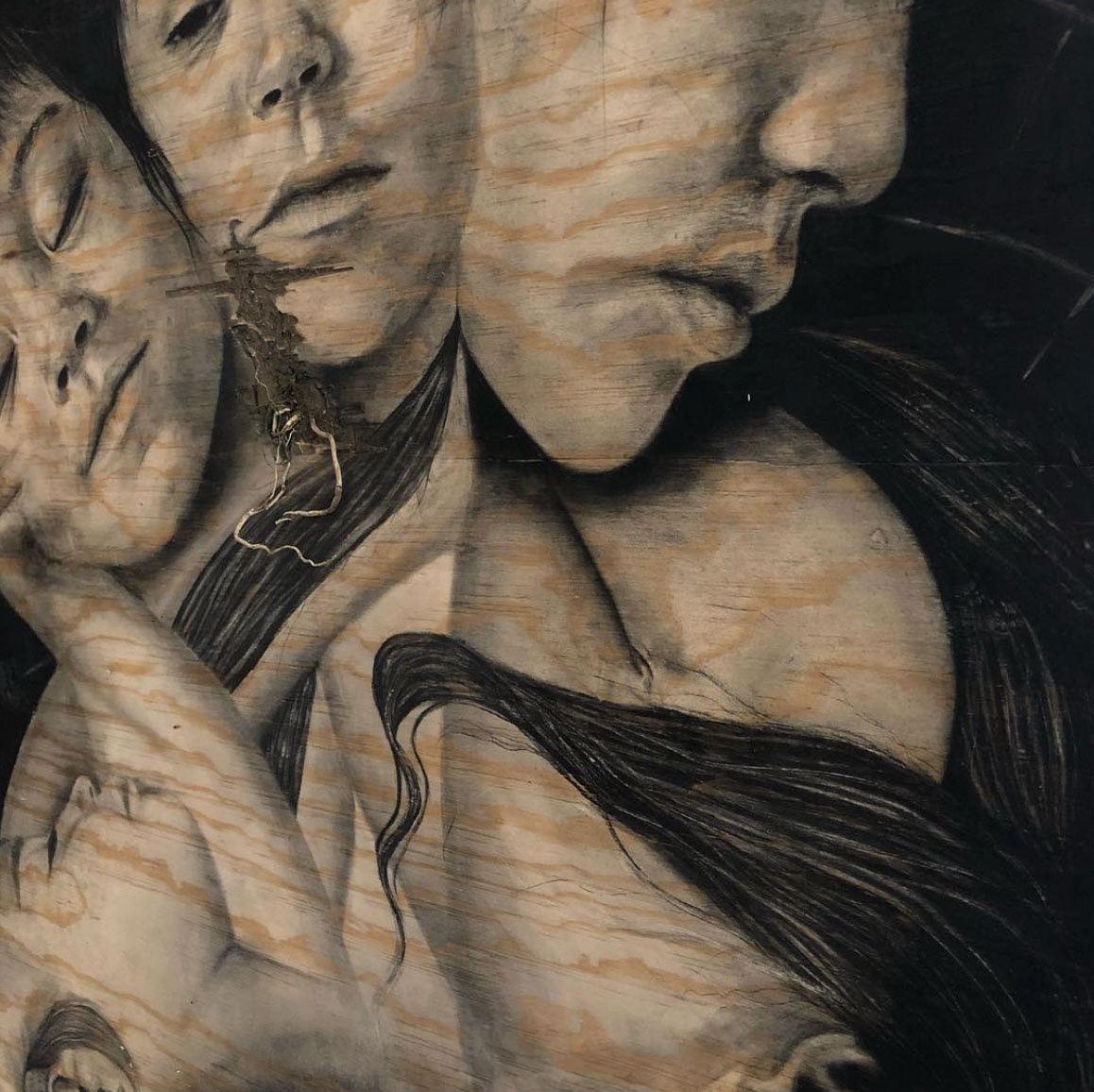
The Trip (El Viaje)
February 12, 2020
Casa Poligono, Mexico City
El Viaje
Una de las actividades criminales más dinámicas en México es el comercio ilegal de madera, y en el estado norteño de Chihuahua existe una preocupación de que las organizaciones de narcotráfico estén tomando el control de este negocio (InSight Crime, Deborah Bonello - 10 de enero de 2019). El término "El Viaje" es utilizado por los trabajadores locales en los pueblos de la Sierra Madre Occidental de Chihuahua para referirse a las rutas que toman los camiones madereros, donde más viajes significan más dinero. La instalación es un comentario sobre el sistema corrupto de tala ilegal perpetuado por los cárteles.
Los diferentes elementos que componen la instalación transmiten varias ideas. La cuerda simboliza tanto la muerte como el proceso de arrastrar troncos para su transporte. El ladrillo de adobe representa el componente arquitectónico de las viviendas en las comunidades rurales. Las lámparas, que se usan comúnmente por la noche en los campamentos de tala, simbolizan la actividad de cortar árboles. Finalmente, la pieza central, un dibujo a carboncillo sobre madera, representa el elemento humano que aparece destruido y dañado.
En conjunto, la instalación retrata un entorno donde los trabajadores realizan actividades de tala de árboles, una actividad que ha sido interrumpida por el narcotráfico. Esta interrupción ha tenido importantes impactos socioeconómicos y ecológicos a lo largo de los años. Los rostros representados en la instalación simbolizan la armonía y la tranquilidad, que se ven interrumpidas por la destrucción y la violencia.
The Trip
One of the most dynamic criminal markets in Mexico is the illegal timber trade, and there is growing concern in the northern state of Chihuahua that drug trafficking organizations are gaining control of this business (InSight Crime, Deborah Bonello - January 10, 2019). Local workers use the term "El Viaje" (The Trip) in the towns of the western Sierra Madre of Chihuahua to describe the routes taken by logging trucks, with more trips equating to more money. The installation serves as a commentary on the corrupt system of illegal logging perpetuated by cartels.
The various elements comprising the installation convey several ideas. The rope symbolizes both death and the process of dragging logs for transportation. The adobe brick represents the architectural component of rural communities' homes. The lamps, typically used at night in logging camps, symbolize the activity of cutting down trees. Finally, the centerpiece, a charcoal drawing on wood, represents the human element that appears destroyed and damaged.
Collectively, the installation portrays an environment where workers engage in tree-cutting activities, an activity that has been disrupted by drug trafficking. This disruption has had significant socioeconomic and ecological impacts over the years. The faces depicted in the installation represent harmony and tranquility, interrupted by destruction and violence.
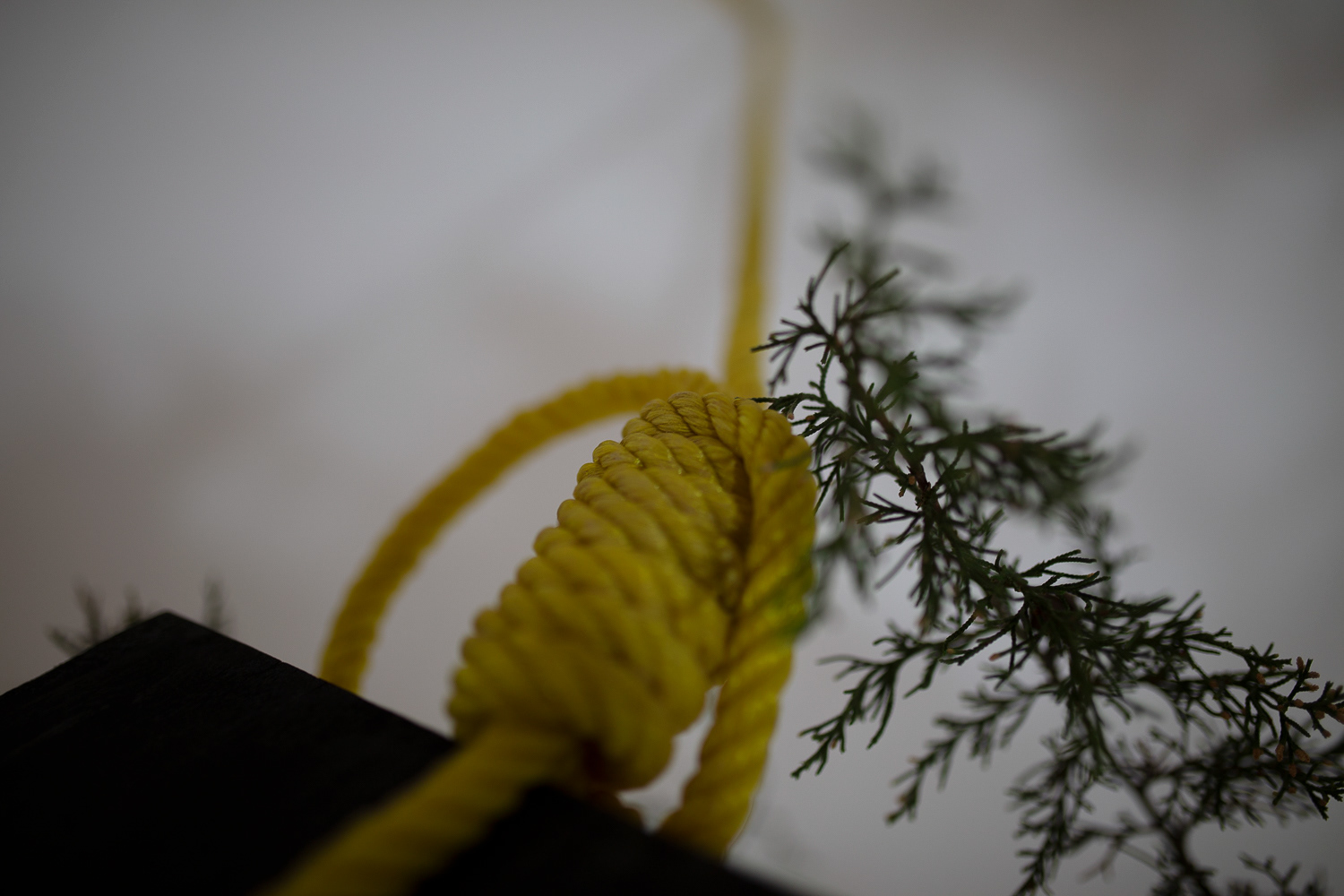
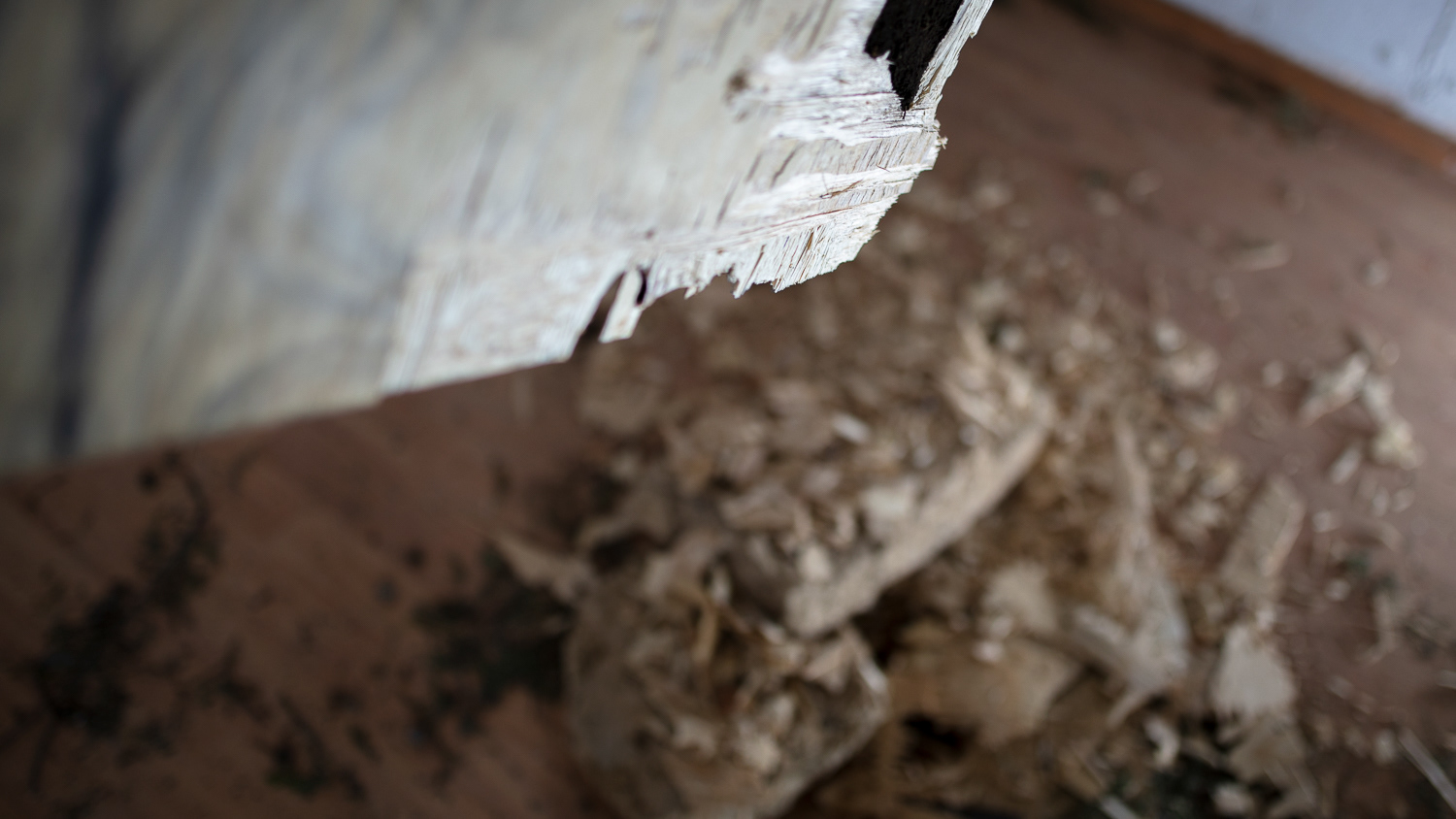
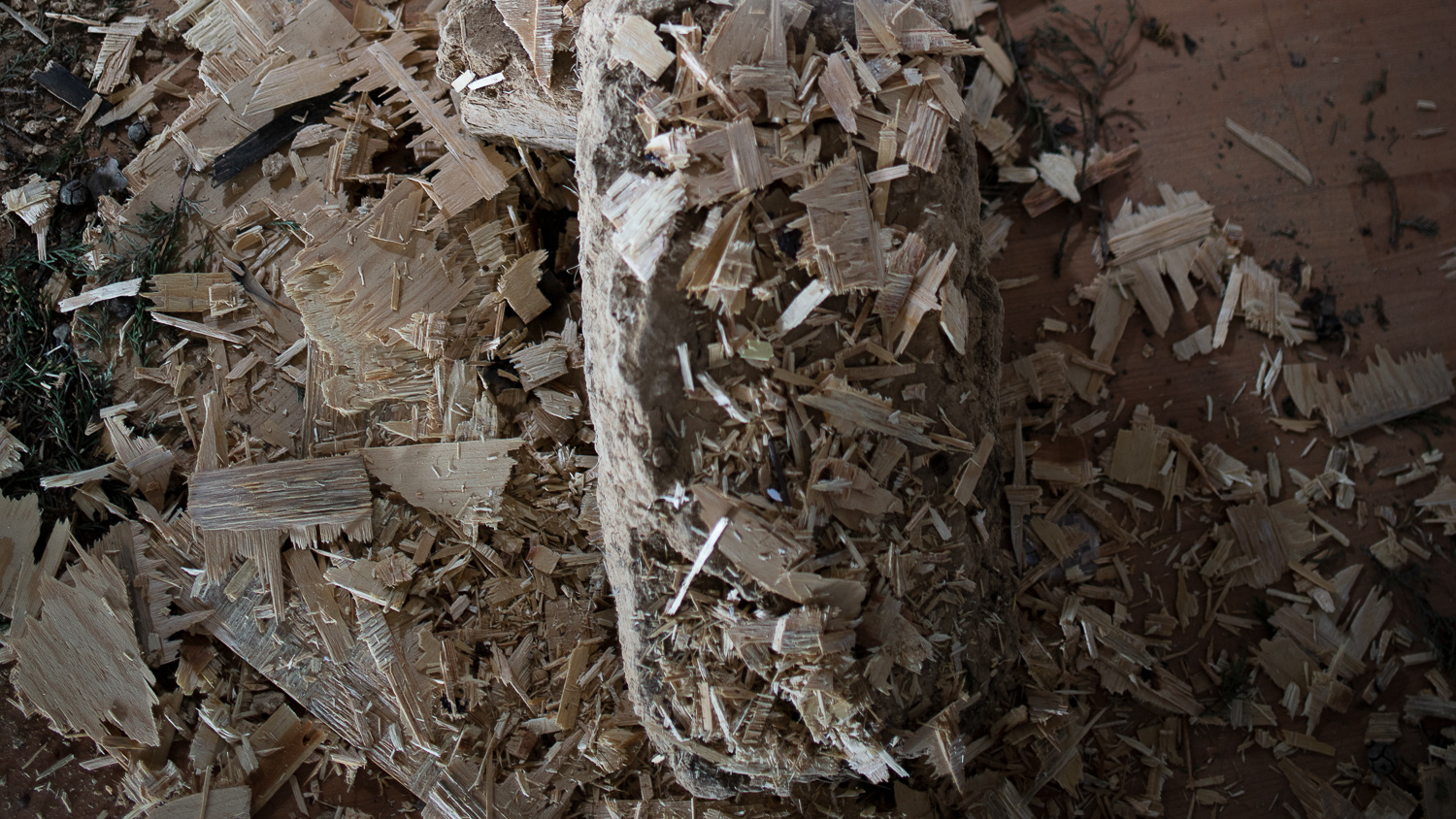
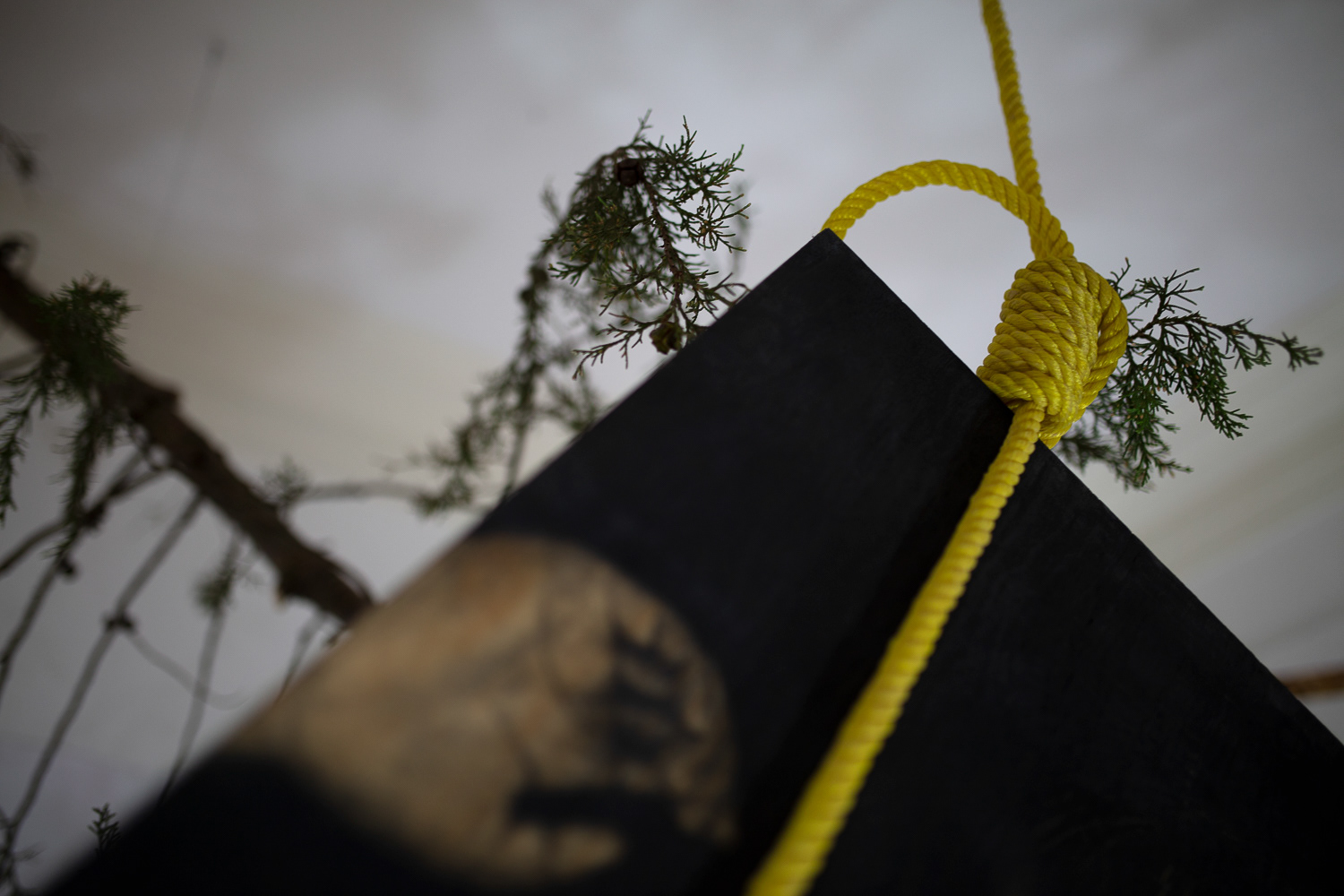

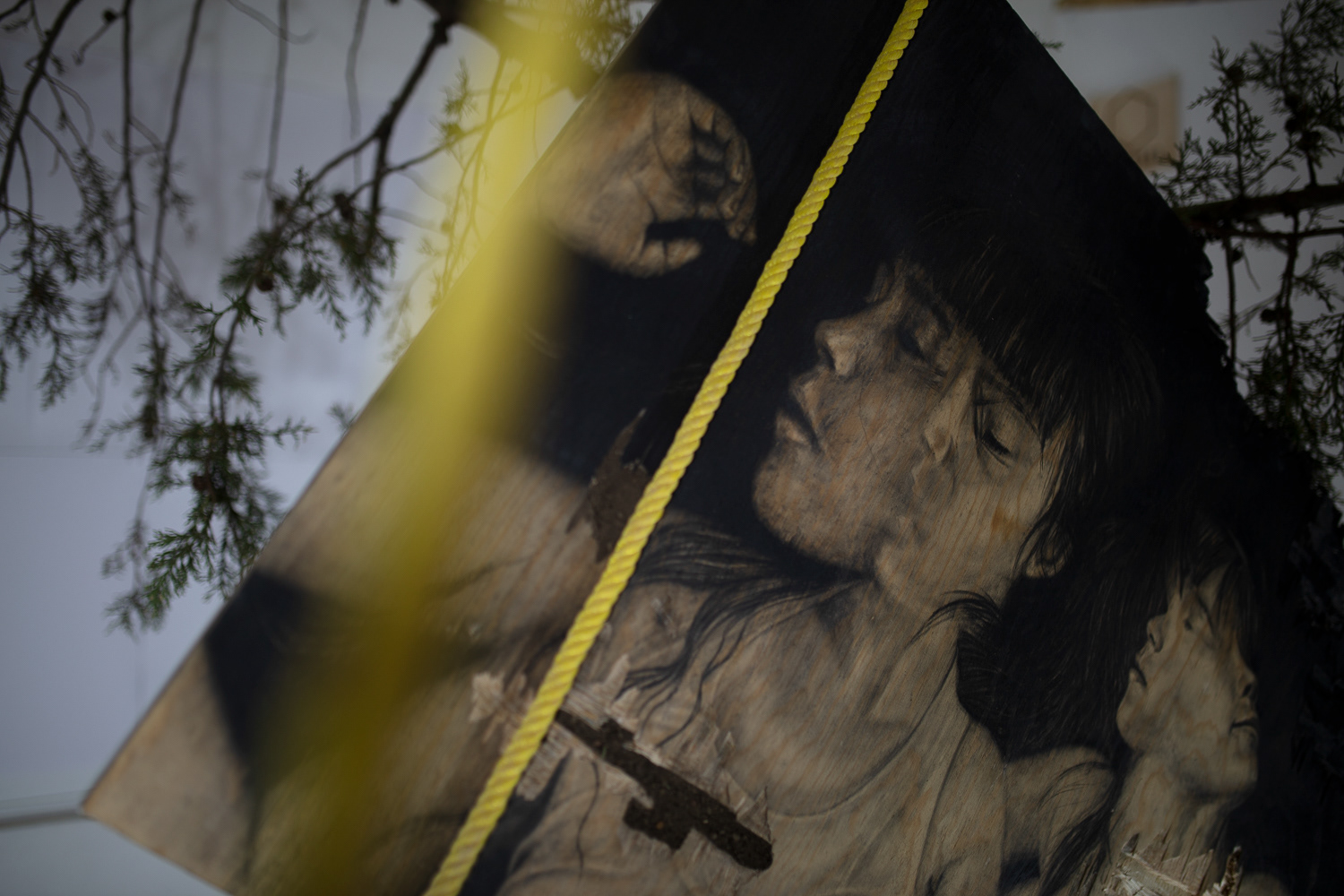
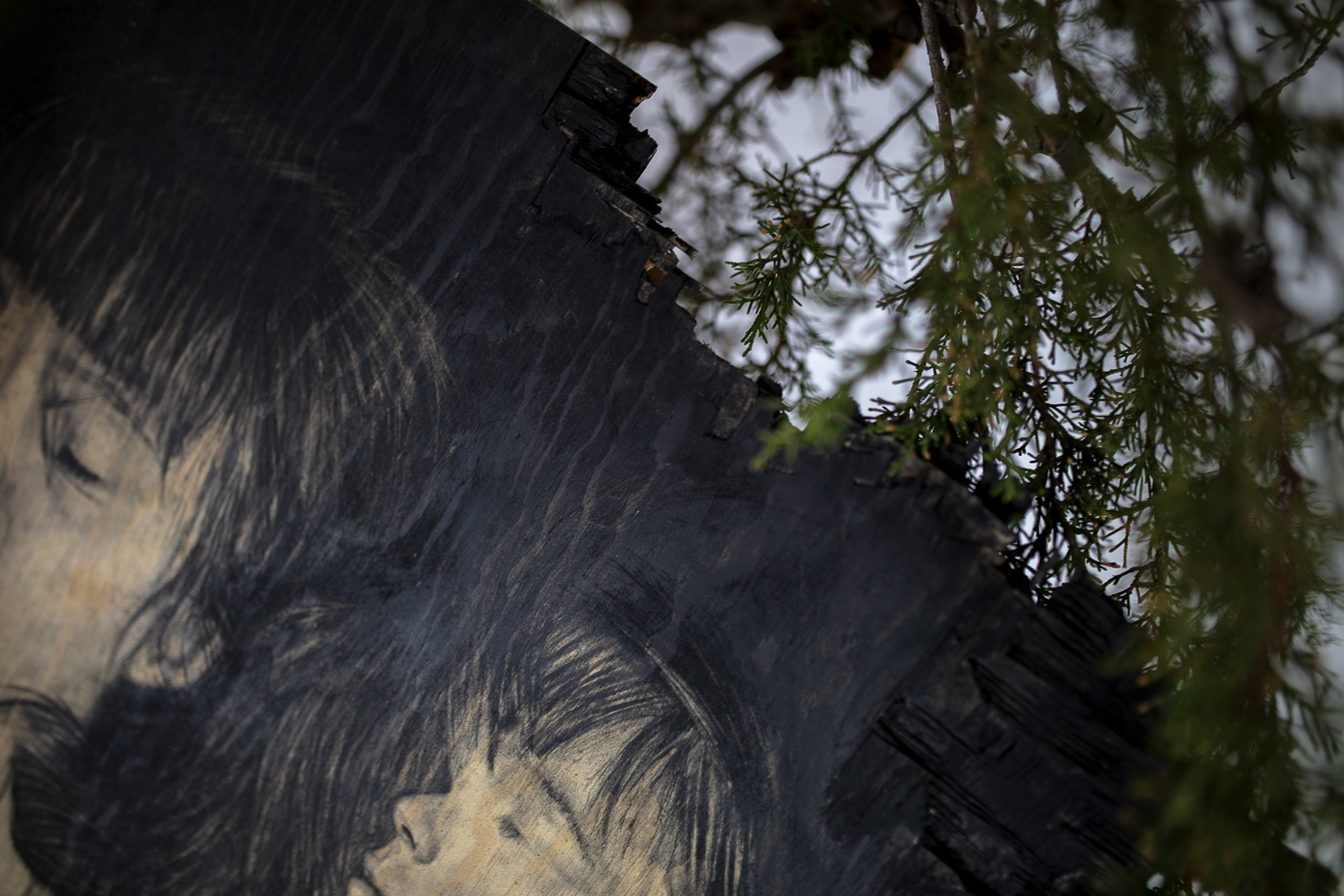
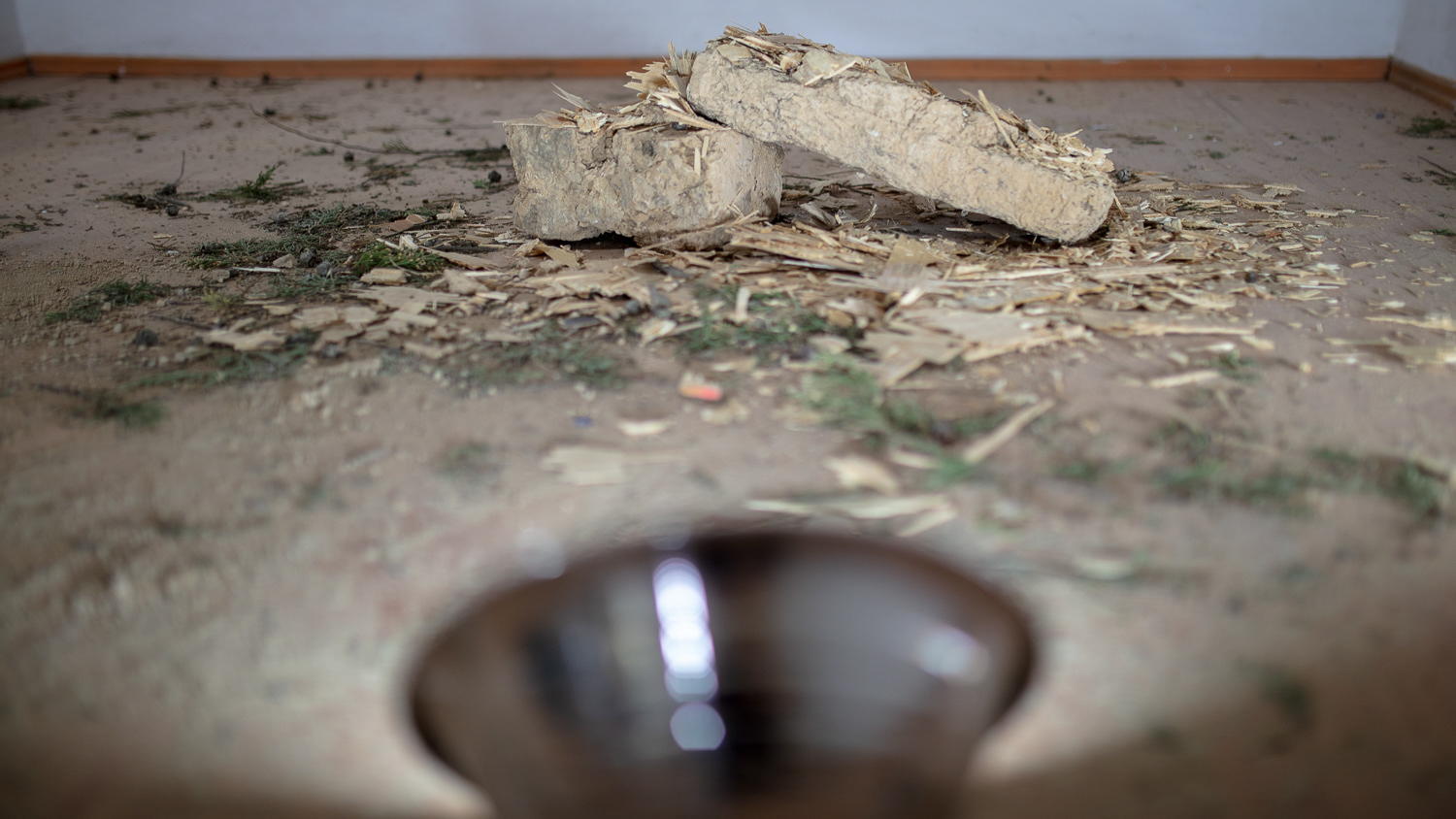


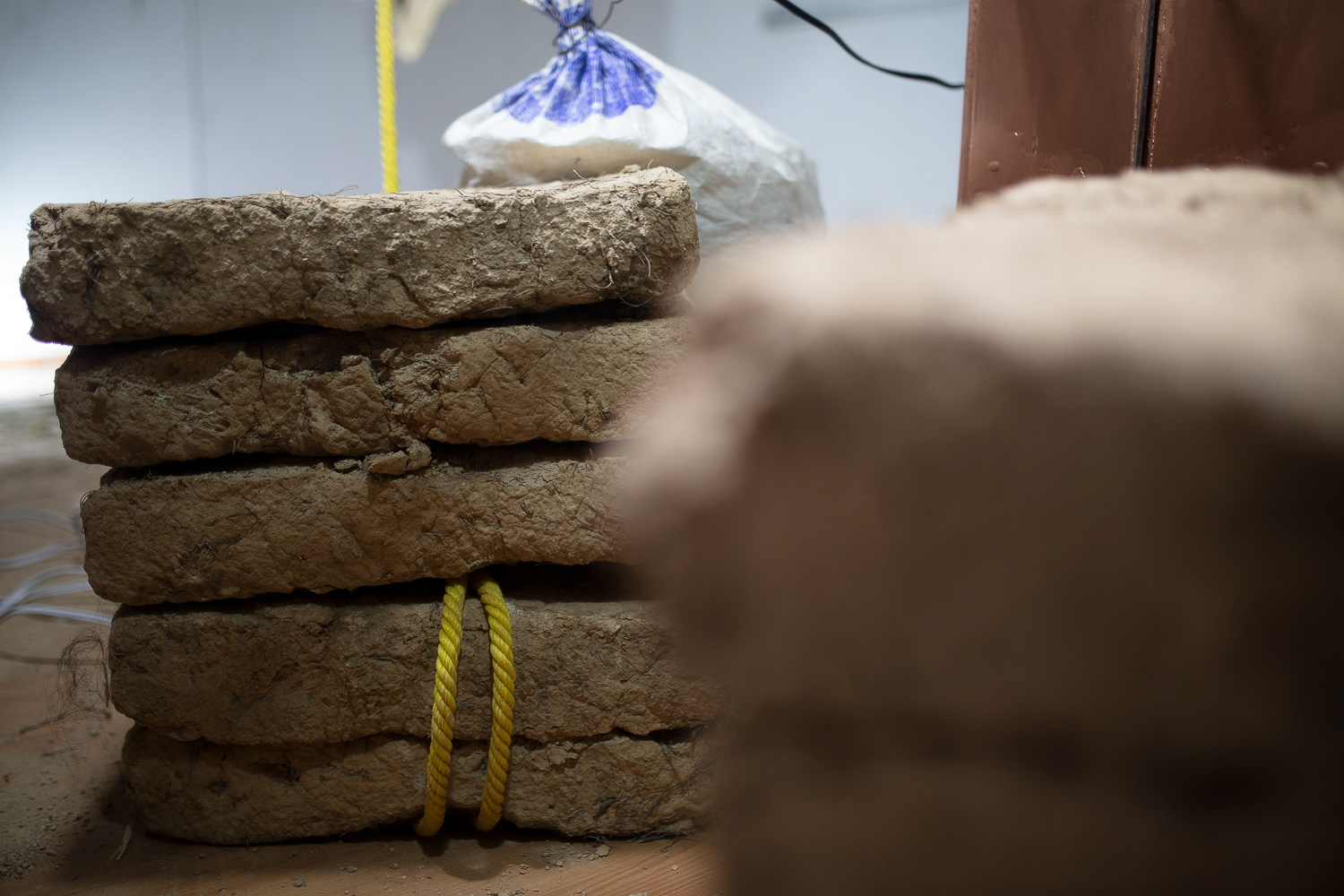
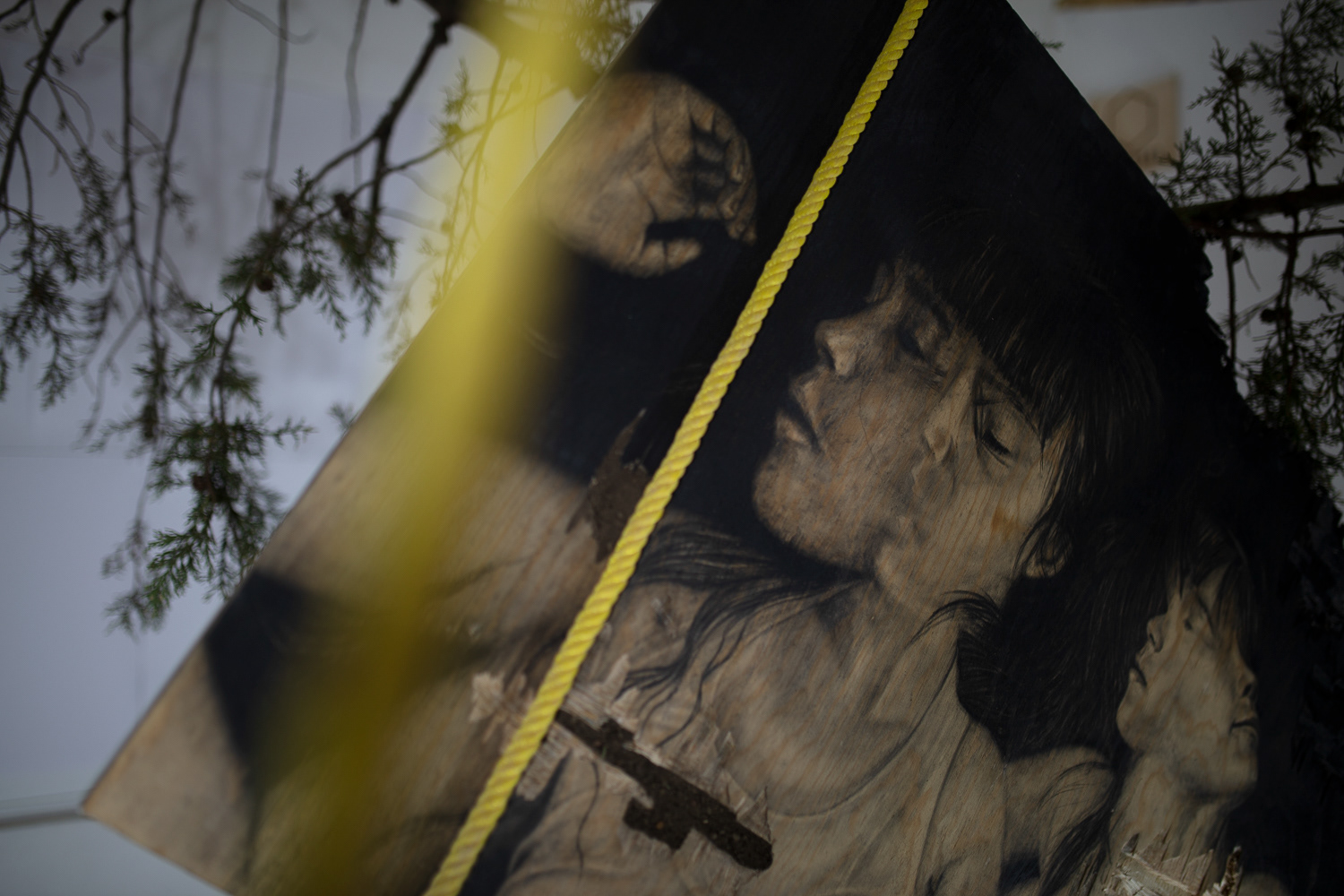
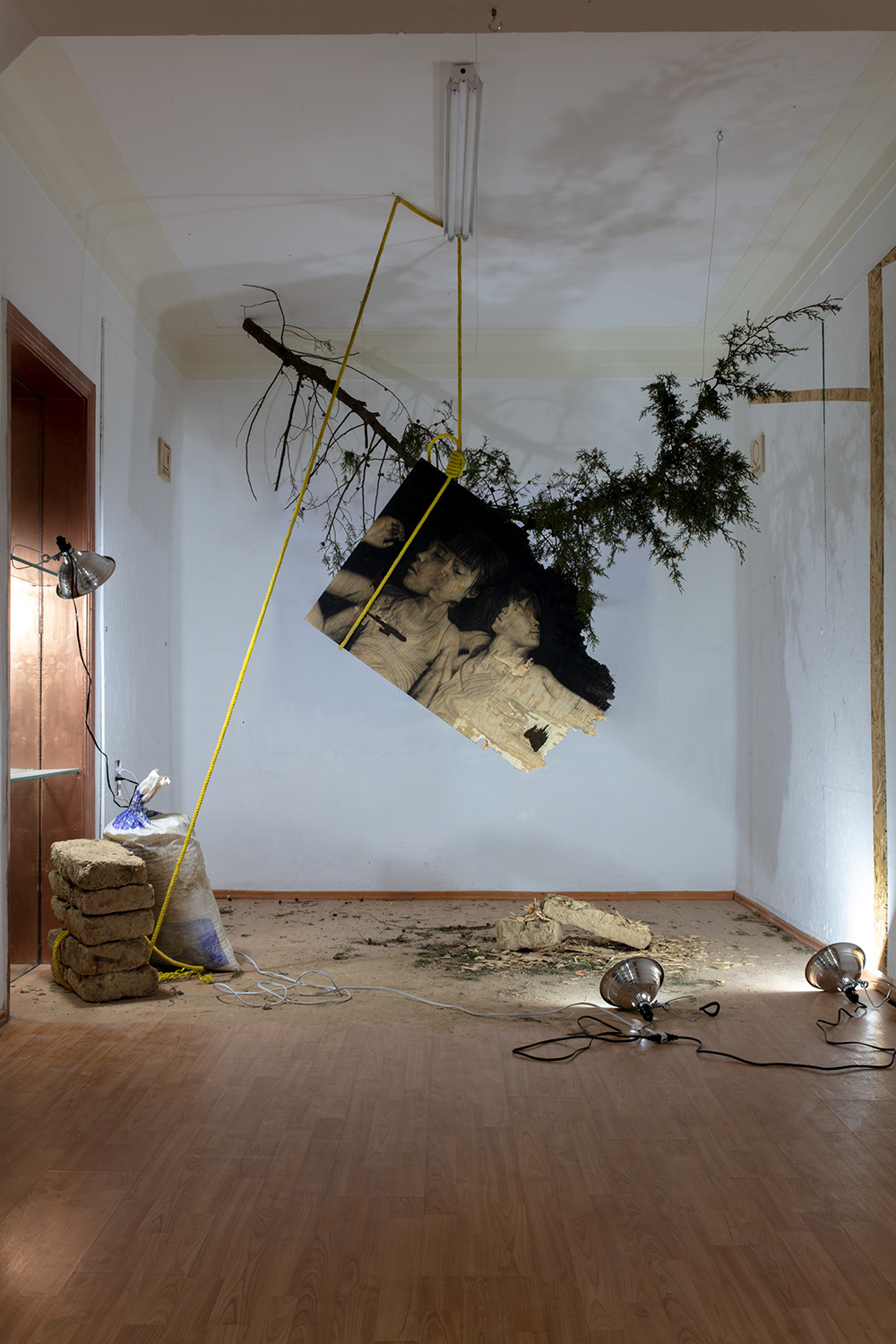
Photos by Pier Fudareli
ALIIVE
November 21, 2017
Lionel Rombach Gallery, Tucson Arizona, United States
Alive is Lesdavag’s profound series of mixed media drawings that beautifully capture and explore the enduring memories left by his beloved mother, who departed from this world. In the wake of her passing, Lesdavag found himself pondering the fundamental questions of life and death, seeking solace in the hopeful notion of a future reunion.
These captivating paintings serve as a tangible manifestation of Lesdavag's profound realization that we are not mere objects, but rather intricate and irreplaceable beings. They reflect his deep understanding that space and time transcend their objective existence and instead serve as intricately woven threads that bind our experiences together. Lesdavag's work illuminates the profound truth that energy, the essence of life itself, remains constant—it cannot be created nor destroyed, only transformed.
Through his artistry, Lesdavag embarks on a poignant exploration of life's essence, adeptly resurrecting cherished memories encapsulated within the rings of growth and the cycles of time. Each stroke of his brush breathes life into the canvas, inviting viewers to embark on a nostalgic journey where fragments of the past intertwine with the present.
Amidst his contemplative charcoal traces, Lesdavag deftly conveys his belief that death is not an absolute end but rather a transition, as he eloquently states, "Death doesn't exist in any real sense; our consciousness will always be in the present." With profound sensitivity and artistic finesse, Lesdavag's artistry transcends the boundaries of mortality, offering viewers a glimpse into the eternal nature of the human spirit.
"Alive" es la profunda serie de dibujos en técnica mixta de Lesdavag que captura y explora de manera hermosa los recuerdos perdurables dejados por su amada madre, quien partió de este mundo. En medio de su pérdida, Lesdavag se encontró reflexionando sobre las cuestiones fundamentales de la vida y la muerte, buscando consuelo en la esperanzadora idea de un futuro reencuentro.
Estas cautivadoras pinturas sirven como una manifestación tangible de la profunda realización de Lesdavag de que no somos meros objetos, sino seres intrincados e irreemplazables. Reflejan su profundo entendimiento de que el espacio y el tiempo trascienden su existencia objetiva y, en cambio, se entrelazan como hilos intrincados que unen nuestras experiencias. El trabajo de Lesdavag ilumina la profunda verdad de que la energía, la esencia misma de la vida, es constante: no puede ser creada ni destruida, solo transformada.
A través de su artística, Lesdavag se embarca en una poética exploración de la esencia de la vida, resucitando hábilmente los recuerdos apreciados encapsulados en los anillos de crecimiento y los ciclos del tiempo. Cada trazo de su pincel da vida al lienzo, invitando a los espectadores a embarcarse en un viaje nostálgico donde los fragmentos del pasado se entrelazan con el presente.
En medio de sus trazos de carbón contemplativos, Lesdavag transmite con destreza su creencia de que la muerte no es un fin absoluto, sino una transición, como él afirma elocuentemente: "La muerte no existe en ningún sentido real; nuestra conciencia siempre estará en el presente". Con profunda sensibilidad y destreza artística, la creatividad de Lesdavag trasciende los límites de la mortalidad, ofreciendo a los espectadores un vistazo a la naturaleza eterna del espíritu humano.


